In the case of the 83-inch version, Samsung took a different path than with the smaller diagonals and opted for the Tandem WOLED panel produced by LG Display. This move initially raised questions, but in practice, it turned out to be a bullseye. We have here an exceptionally successful mix: absolutely reference black, excellent brightness allowing for enjoyment of HDR content even during the day, and overall picture quality that confidently places this TV at the top of the entire market. There are also advantages aimed at gamers – lightning-fast input lag, 165 Hz refresh rate, full support for VRR and G-Sync/Freesync, as well as four HDMI 2.1 ports that allow for connecting multiple consoles or PCs without any compromises. Additionally, we must note the matte coating – rarely found in OLEDs, and in this case, extremely effective. Thanks to it, light reflections are largely eliminated, and the TV remains readable and comfortable to watch even in a sunlit living room. This feature takes on even greater significance in such a large size, as it is hard to imagine an 83-inch screen where instead of a movie, we see the reflection of our own room. Of course, there were some compromises – the viewing angles on the WOLED panel are not as perfect as in the QD-OLED versions. However, in return, we get better performance in difficult lighting conditions and a more stable picture under strong light hitting the screen. In practice, it is hard to consider this a real downside, rather a different balance of emphasis compared to the smaller variants. The S95F in the 83-inch version is a nearly explosive mix: a gigantic OLED with a matte coating, great brightness, fantastic black levels, and a full package of features for gamers. If someone dreams of a huge, matte screen that is not afraid of daylight, they currently won’t find a better screen on the market.
- Matching (Score)
- Our verdict
- TV appearance
- Where to buy
- Contrast and black detail
- HDR effect quality
- Factory color reproduction
- Color reproduction after calibration
- Smoothness of tonal transitions
- Image scaling and smoothness of tonal transitions
- Blur and motion smoothness
- Console compatibility and gaming features
- Input lag
- Compatibility with PC
- Viewing angles
- TV efficiency during daytime
- Details about the matrix
- TV features
- Apps
- Playing files from USB
- Sound
SAMSUNG S95F (TANDEM OLED 83") vs LG QNED86A / QNED85A / QNED87A
Direct compare
S95F / FAT / FAE
QNED85A / QNED86A / QNED87A / A6A / A6B / A6C
Available screen sizes: 83”
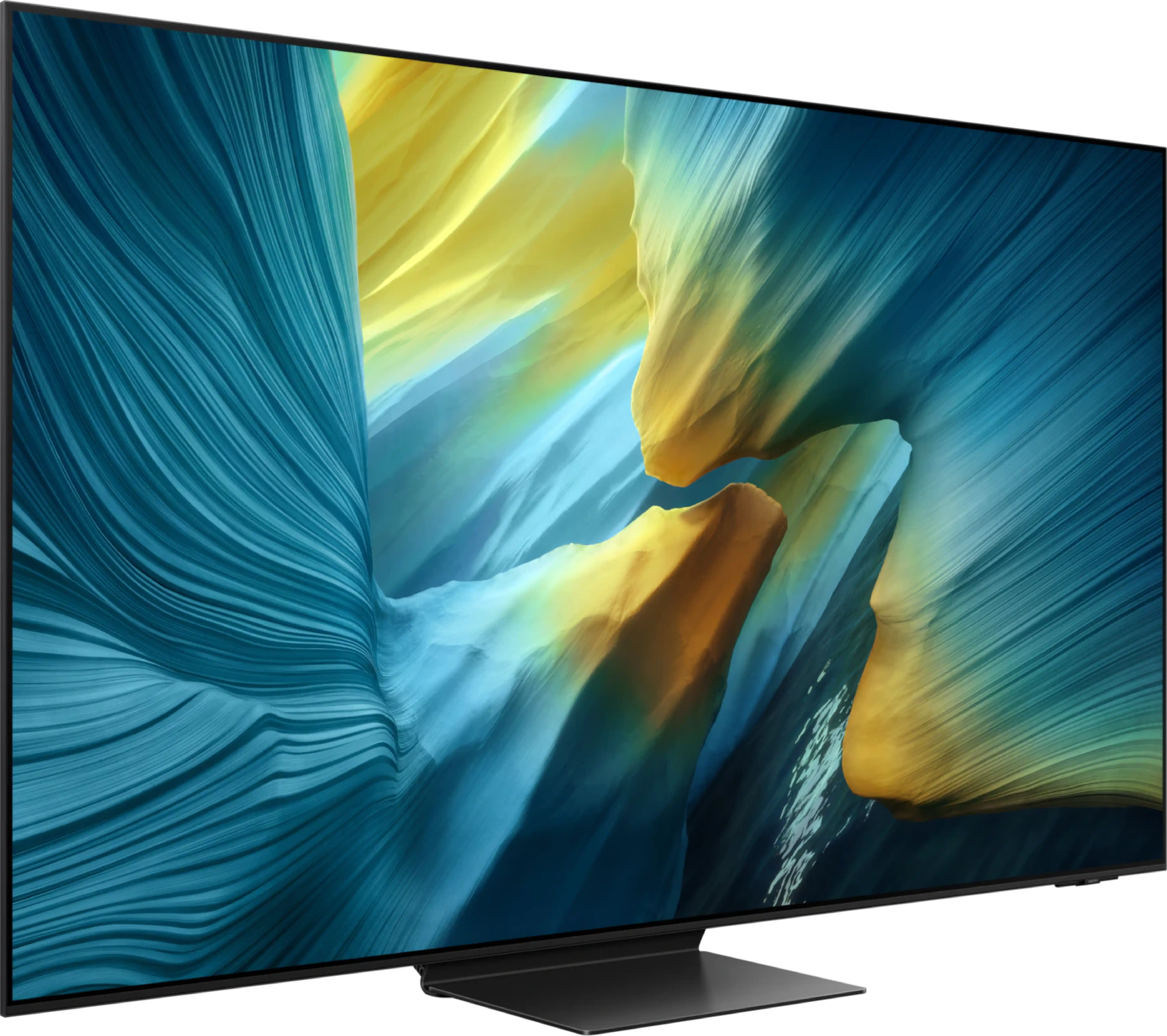

Panel type: WRGB OLED
Resolution: 3840x2160
System: Tizen
Model year: 2025
Complete the survey to find out the result

Panel type: LCD IPS
Resolution: 3840x2160
System: WebOS
Model year: 2025
Complete the survey to find out the result

Overall rating
8.7
7.0
Movies and series in UHD quality
9.0
6.4
Classic TV, YouTube
9.0
6.2
Sports broadcasts (TV and apps)
8.7
7.2
Gaming on console
9.9
8.4
TV as a computer monitor
8.8
8.0
Watching in bright light
7.7
5.8
Utility functions
7.9
8.4
Apps
8.7
9.1
Sound quality
8.0
6.0
Complete the survey to find out what fits your preferences
Advantages
Perfect black and excellent contrast
High image brightness
Outstanding image quality after calibration
Ultra-fast WOLED panel 165 Hz
Great choice for gamers – full support for HDMI 2.1, VRR, ALLM, and HGiG, input lag of only 5 ms
Very precise color reproduction after calibration
Best reflection suppression thanks to the matte screen finish and better panel performance in challenging lighting conditions than the version with QD-OLED panel
Intuitive and fast Tizen operating system with a rich set of features
Modern and elegant design
One Connect module for easy and aesthetic cable management
120 Hz panel, good for sports and gaming
Very low input lag
Great for gamers (VRR, ALLM, HGiG, etc.)
Full set of HDMI 2.1 ports
Good compatibility with PC (great font readability)
Bright picture (around 700 nits in HDR), works well in moderately bright rooms
Good viewing angles (IPS)
Supports Dolby Vision
User-friendly webOS operating system with Magic Remote and voice assistant
Ability to record programs to USB
Disadvantages
No support for DTS:X (home theater)
No recording to USB from built-in tuners
Worse viewing angles (though still very good) than in the version with QD-OLED panel
Very poor black and contrast due to the IPS panel
Lack of the declared 144 Hz in PC mode
Aggressive "light bars" when dimming is enabled (edge local dimming ruins evening movie screenings)
Confusion in markings and versions – even TVs with the same name in different stores can have different stands (central or two legs) or frame colors, which can be very misleading when purchasing.
Our verdict
QNED86A6A is a television that really does a great job in its price class when it comes to sports, gaming, and everyday TV watching. The 120 Hz panel makes the picture smooth and the motion sharp, which will be appreciated by both fans and gamers. Additionally, it has low input lag along with a full set of gaming features such as HGiG, VRR, and ALLM. The TV works just as well with a computer as it does with a console, so in the office or on a desk in the 43” version, it will perform excellently as a work monitor. Another strong point is the webOS system. It is a fast, stable, and app-rich operating system that, paired with the Magic remote, provides very convenient control. The new version of the remote is slimmer and fits better in the hand, and the cursor on the screen is a solution that many competitors lack. It also includes classic features – USB recording, Bluetooth for headphones, and a full set of HDMI 2.1 with eARC and Dolby Atmos support. This makes the QNED85 series TVs some of the most "multimedia" televisions in their class. But let's not sugarcoat it; this model also has its significant drawbacks. Its biggest flaw is undoubtedly the contrast, or rather the lack of it. The IPS panel combined with edge "mini-LED" is simply a very bad idea. The screen is simply not suitable for watching movies in a dark living room. The blacks are grayish-blue, and local dimming can generate light stripes resembling lasers, which effectively ruins the viewing experience. For home theater, this is not a choice that can be recommended with full conviction. The second problem may not be directly related to the TV itself but to its sales. It concerns the chaos in naming and the differences in derivative versions. The same model, even with the same designation, can have a different frame color or stand depending on the store. This can really be frustrating for the buyer and create a sense of confusion. In summary: LG QNED86A6A is a great TV for sports, gaming, and everyday television, with a convenient system and great functionality. But if you are looking for a screen specifically for movies or series and require deep blacks, it is better to look towards TVs that can truly be called Mini-LEDs with full confidence.
TV appearance
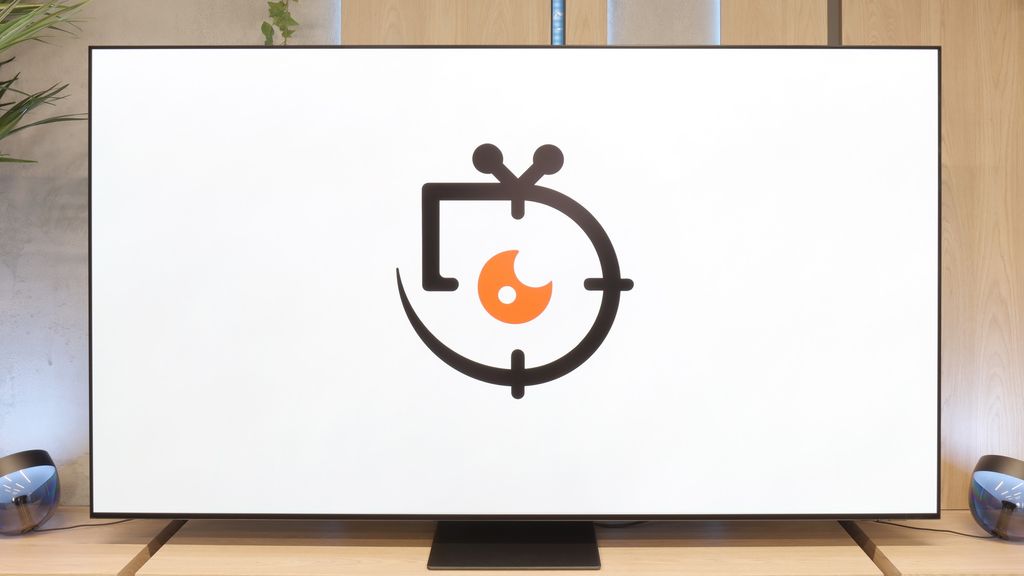
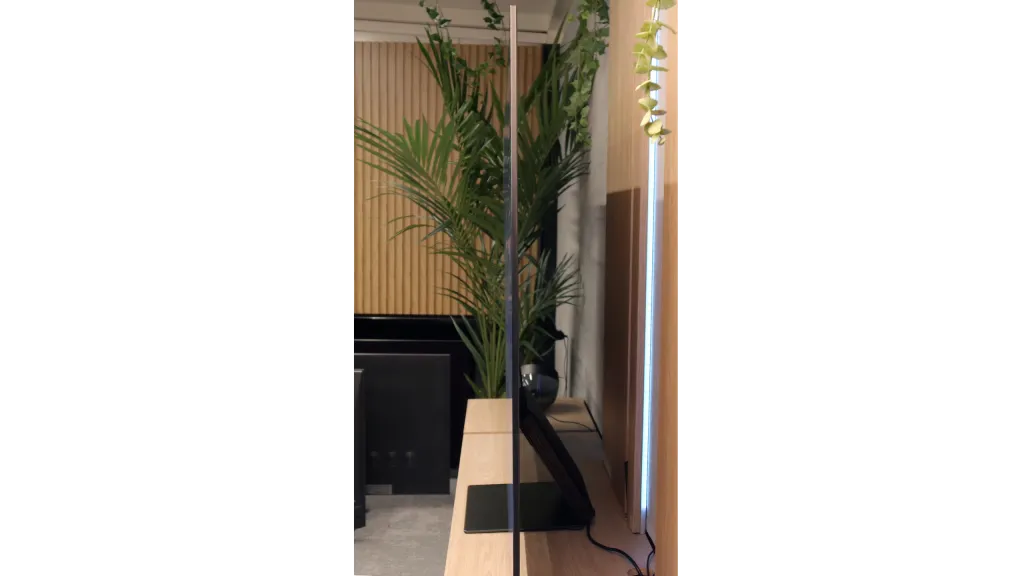
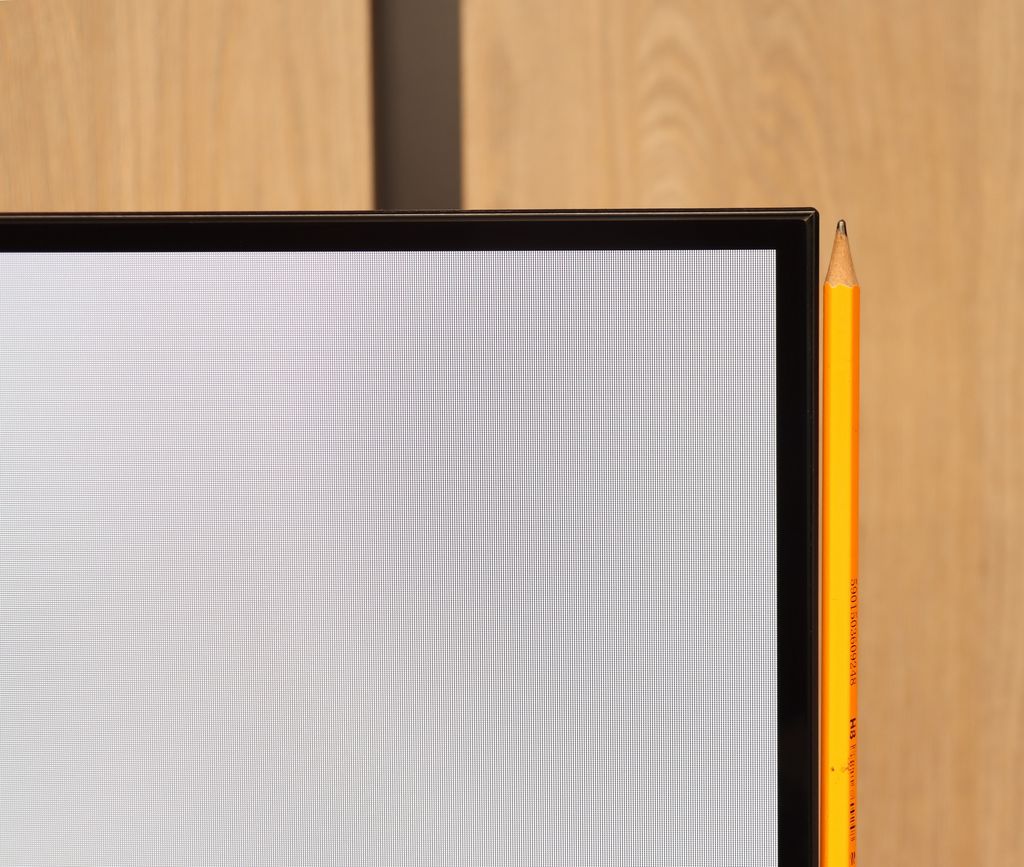
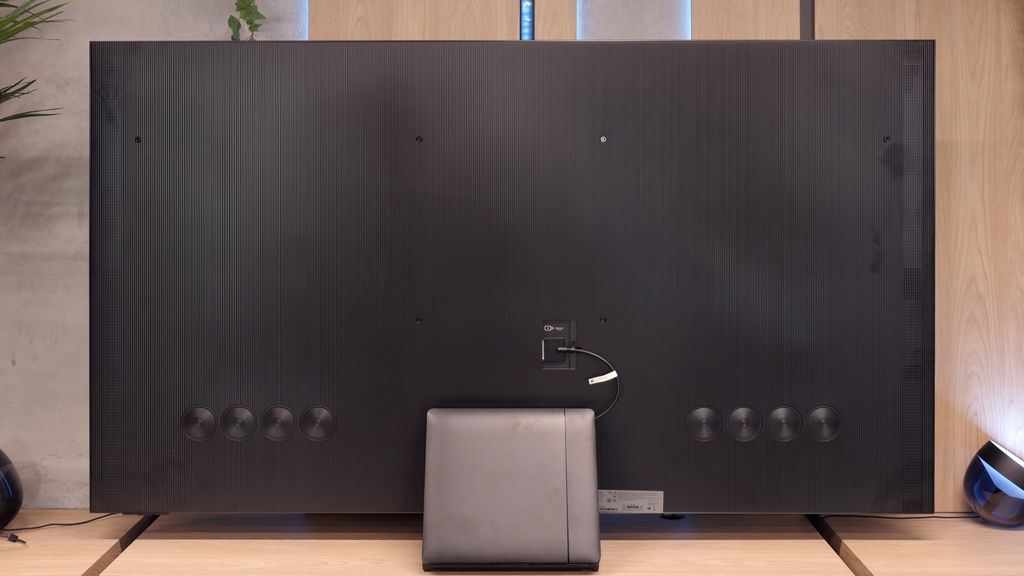
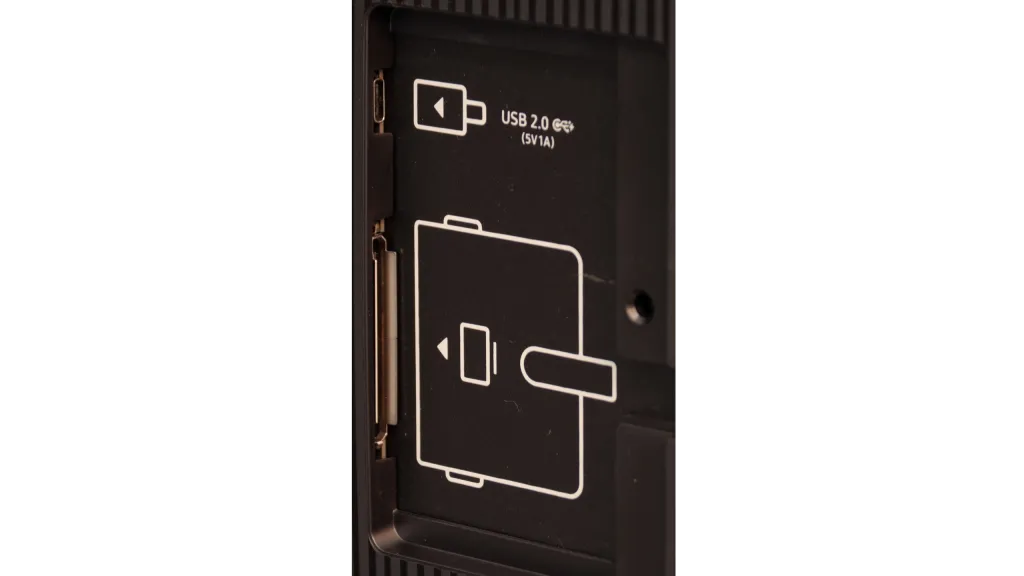



Contrast and black detail
10/10
3.7/10
Local dimming function: Yes, number of zones: 6 (1 x 6)
Contrast:

Result
∞:1

Result
∞:1

Result
∞:1

Result
∞:1

Result
∞:1

Result
4,050:1

Result
1,750:1

Result
4,800:1

Result
1,850:1

Result
1,350:1
Halo effect and black detail visibility:
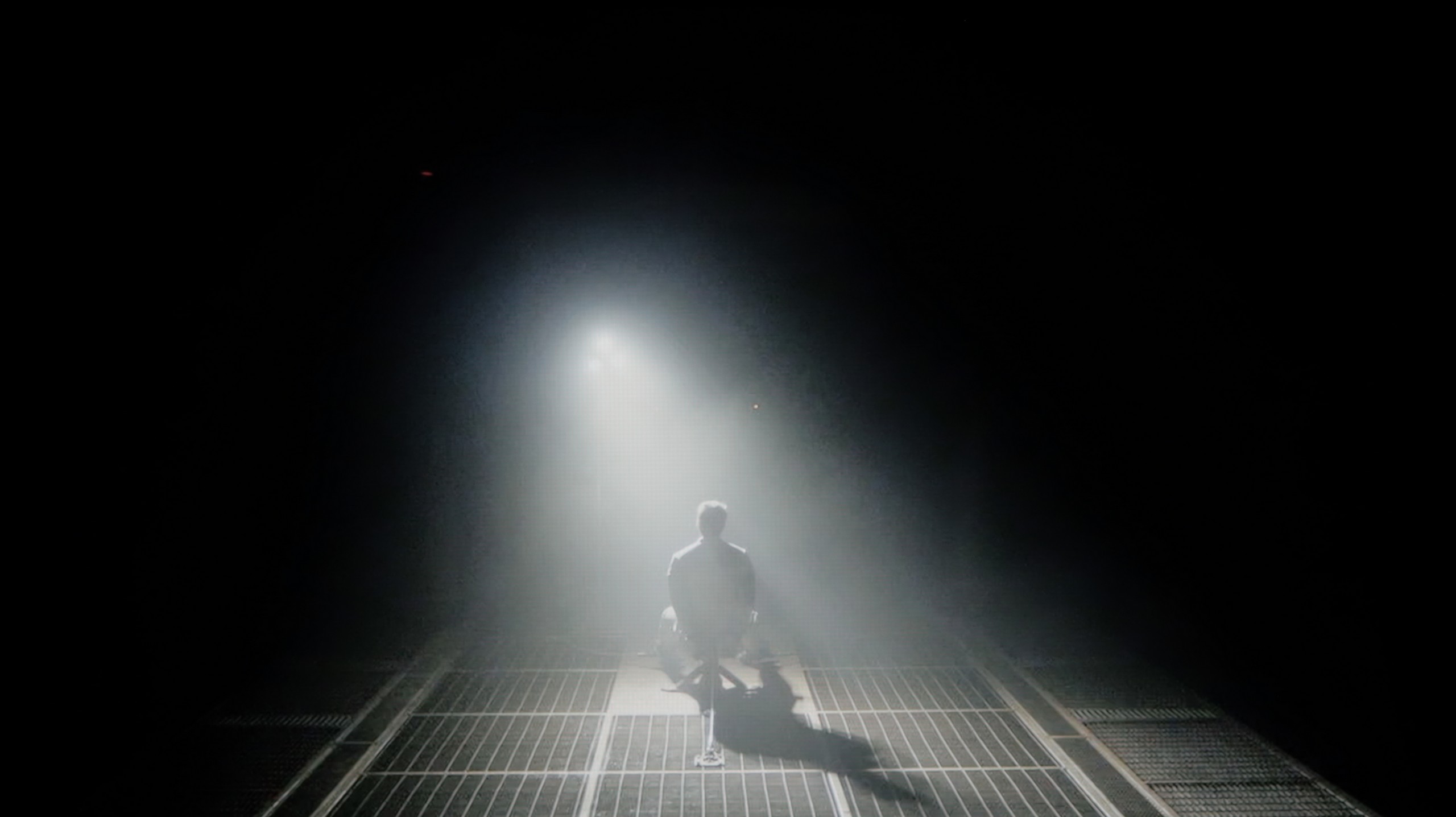

The 83-inch version, equipped with a Tandem OLED panel, also offers an image that is absolutely stunning. Despite the different technology, the final effect remains at an absolutely top level. The black is deep and uniform, with no bleed-through or imperfections, and the contrast is truly breathtaking. In dark scenes, every detail remains visible, and the separation of lights is perfect – nothing blends together, and the image looks as it should on a reference-class television. This is proof that regardless of the panel used, Samsung has set the bar very high in this series.
Although the manufacturer describes the QNED86A as a Mini-LED television, one would be hard-pressed to find the multi-zone local dimming system known from more expensive models. In practice, we are dealing with classic edge lighting that only allows for dimming horizontal bands of the screen from top to bottom. Combined with the low-contrast IPS/ADS panel, the effect is simply poor. If we decide to keep local dimming enabled, a problem arises – the television can illuminate selected areas in such a way that it appears like “flying lasers” crossing the screen. This is very distracting, and it is difficult to claim a truly cinematic experience under such conditions. Therefore, in our opinion, it is better to disable this function. However, one has to reckon with the fact that the contrast then drops to around 1500:1, but at least the image does not irritate with artificial flashes.
HDR effect quality
8.6/10
6/10
Luminance measurements in HDR:

Result
2074 nit

Result
2107 nit

Result
2330 nit

Result
2165 nit

Result
1083 nit

Result
602 nit

Result
524 nit

Result
690 nit

Result
512 nit

Result
500 nit
Scene from the movie “Pan” (about 2800 nits)


Scene from the movie “Billy Lynn” (about 1100 nits)


Static HDR10


Dynamic: HDR10+
Dynamic: Dolby Vision


HDR luminance chart:
LG QNED86A / QNED85A / QNED87A
HDR luminance
SAMSUNG S95F (TANDEM OLED 83")
HDR luminance
Luminance of RGB colors
Samsung S95F in the 83-inch variant with Tandem OLED panel also enchants with HDR effects. In test movie scenes, such as "Life of Pi" or "Sicario 2," where smaller light points dominate – stars in the night sky, the glow of the moon, or headlights – the television easily achieves brightness values exceeding 2000 nits. This is a result that not long ago seemed unattainable for OLEDs and places this model in the same category as the best Mini-LED designs.
The limitations of organic panels reveal themselves only in full-screen scenes completely filled with white. In the case of this model, for example, in the last shot from the movie The Meg, brightness drops to around 1000 nits – a bit lower than in the smaller QD-OLED variants, where the result remained around 1400 nits. Nevertheless, we are still talking about a remarkable result, unprecedented in OLED televisions of this size. Color reproduction is equally impressive. The new Tandem OLED panel essentially catches up with QD-OLED televisions, offering excellent coverage of a wide color gamut. The results are slightly weaker than those of QD-OLED, but in practice, they still provide an image whose intensity and naturalness of colors are hard to compare with any other television.
Against the backdrop of contrast and black, the brightness of the QNED86A and the overall HDR effect performs much better. This is a television that can reach around 700 nits in the best conditions, so in terms of brightness alone, there is nothing to be ashamed of. As a result, scenes with strong lights, explosions, flashes, or bright parts of the landscape look clear and can make an impression. Interestingly, even in more challenging moments with small, contrasting elements on the screen, the television handles their backlighting well, and the details are quite visible. The problem resurfaces when there are a lot of dark tones. The lack of effective local dimming causes black to virtually disappear, and instead, we get a gray glow spreading across the entire screen. This kills the sense of depth and makes the image look flat, as if it lacks a cinematic quality. In bright animations or colorful family films, this won't be an issue because colors and bright light dominate there. But in horrors or productions set in darkness, these limitations are very palpable. As a consolation, it’s worth mentioning that the QNED86A is actually a QLED television with a PFS LED filter, which gives it very good coverage of wide color gamuts. Both the DCI-P3 palette and the wider BT.2020 perform really solid here. This ensures that colors in HDR films are saturated, vibrant, and have the right depth – even if the black itself disappoints, the colors can save the viewing experience and make the image look attractive.
Factory color reproduction
6/10
5.6/10


Factory Mode
After calibration


Factory Mode
After calibration
The best picture mode straight out of the box is undoubtedly Filmmaker Mode. This mode has been present in Samsung TVs for several years, and its intention is to reproduce the image as faithfully as possible to the creators' vision. In SDR content, it works reasonably well, although not without flaws. The picture is slightly dimmed, and the white balance tends to shift towards red and blue, resulting in a slight pinkish hue on the screen. Average color errors hover around ΔE values of 3–4, which is on the edge of what most people can perceive with the naked eye.
The limitations are much more apparent with HDR content. Here, a slight excess of blue in the white balance is not as big of a problem – the real issue becomes how the TV manages brightness. In many scenes, the picture looked as if it had been overexposed, and details in the dark could completely disappear. The final effect did not represent what the equipment of this class is capable of and led to significant color errors. It’s hard to understand why such a factory characteristic was chosen, as the HDR reception in this version definitely was not what it should be.
We primarily tested the QNED86A in Filmmaker mode, which is designed to provide the most accurate picture. Unfortunately, right out of the box, there were quite a few shortcomings. The most noticeable issue was the poorly adjusted white balance – there was a lack of blue, causing the overall image to lean slightly yellow, and at times, even orange. An even bigger problem turned out to be the way the television manages brightness. Due to its technical limitations – namely, local dimming that only works along the edges of the screen – the QNED86A tends to over-brighten entire scenes. This is where the flattening effect we mentioned earlier comes from. Instead of distinct depth and contrast, we get something akin to "boosted brightness," which can strain the eye over time.
Color reproduction after calibration
9.4/10
7.6/10




After calibration, the S95F shows what it is truly capable of. The white balance was corrected, and minor inaccuracies were adjusted, making the image in SDR content look almost exemplary. Color differences have dropped below the level that the human eye can detect – looking at the screen, one simply feels a full sense of naturalness and color coherence.
In HDR, the improvement is equally noticeable. The television handles brightness much better, eliminating the "blowing out" effect of the entire frame. Bright scenes are more controlled, and blacks retain more detail, although sometimes there may still be slight brightening of the image as a whole. Nevertheless, after calibration, the S95F delivers an image that can confidently be called one of the best on the market – regardless of whether we are watching films in SDR or spectacular productions in HDR.
What was saved in the QNED86A6A is undoubtedly the colors. After calibration, the white balance was set with great precision, resulting in deviations on the Colour Checker palette mostly not exceeding the threshold of visibility for the human eye. In other words – the colors finally looked natural, without strange yellow or orange tones that previously ruined the experience. Unfortunately, even the best calibration cannot bypass design limitations. The already mentioned very modest number of local dimming zones and their unfortunate placement made the analysis of the EOTF curve in films still show clear over-brightening of scenes. The image tended to flatten, lacking cinematic depth. Fortunately, this effect is not as noticeable in older productions or SDR content. There, calibration really does its job and allows taming the QNED in such a way that the image can be pleasing. However, the specifics of this design – especially the contrast issues – cannot be entirely overcome.
Smoothness of tonal transitions
8.6/10
8.9/10




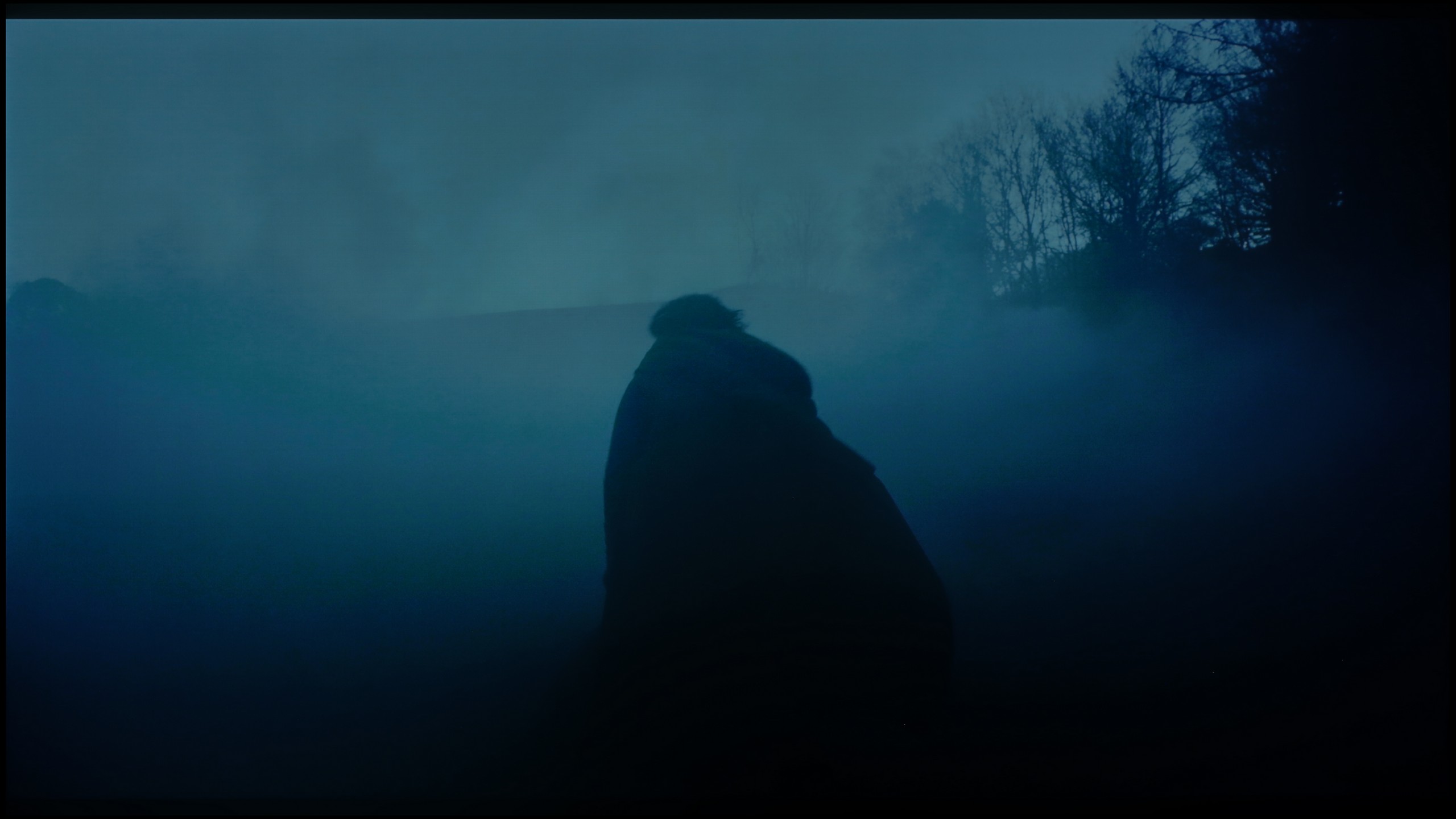

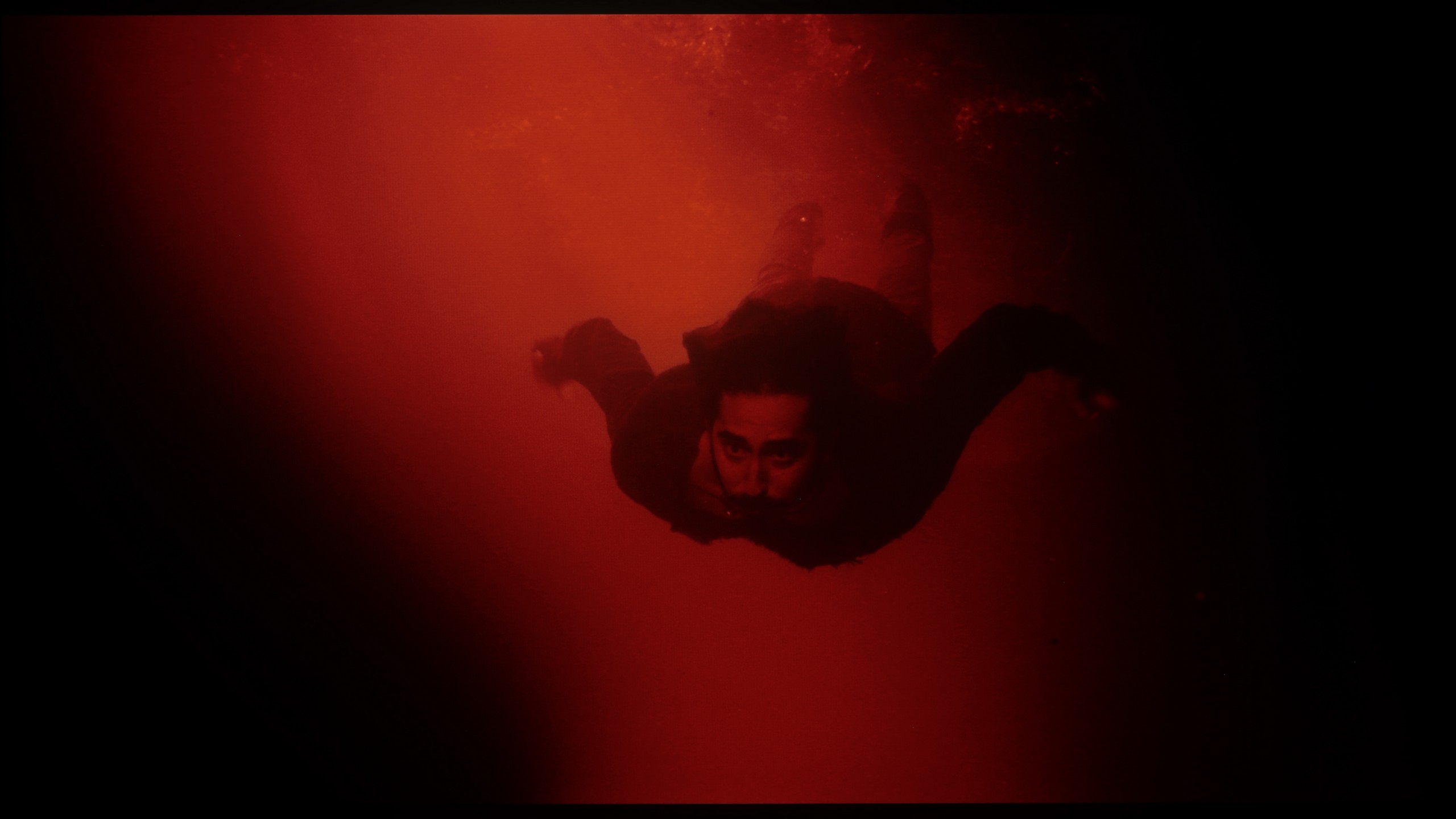





The S95F version with Tandem OLED panel also handles the smoothness of tonal transitions very well. Although WOLED panels have not traditionally been the strongest in this category, it is hard to find significant issues here. The gradation of colors is smooth and natural, and only minor imperfections may appear with brighter colors. However, they are not significant enough to spoil the overall perception of the image – the whole presentation is at a really high level.
The blending of colors is one of the stronger points of the QNED86A. In everyday viewing, the image appears really smooth, without noticeable "steps" or sudden transitions between colors. The television handles color blending quite naturally, so with most materials, it's hard to spot issues with gradation. Any imperfections only appear in extreme conditions – for example, in the darkest scenes of movies, where even much more expensive televisions can have problems. There, you might notice slight banding or characteristic stripes, but these are marginal situations that shouldn't interfere with normal usage. Overall, the QNED86A performs well in this category and has nothing to be ashamed of compared to the competition.
Image scaling and smoothness of tonal transitions
7.5/10
7.8/10
Smooth transition function
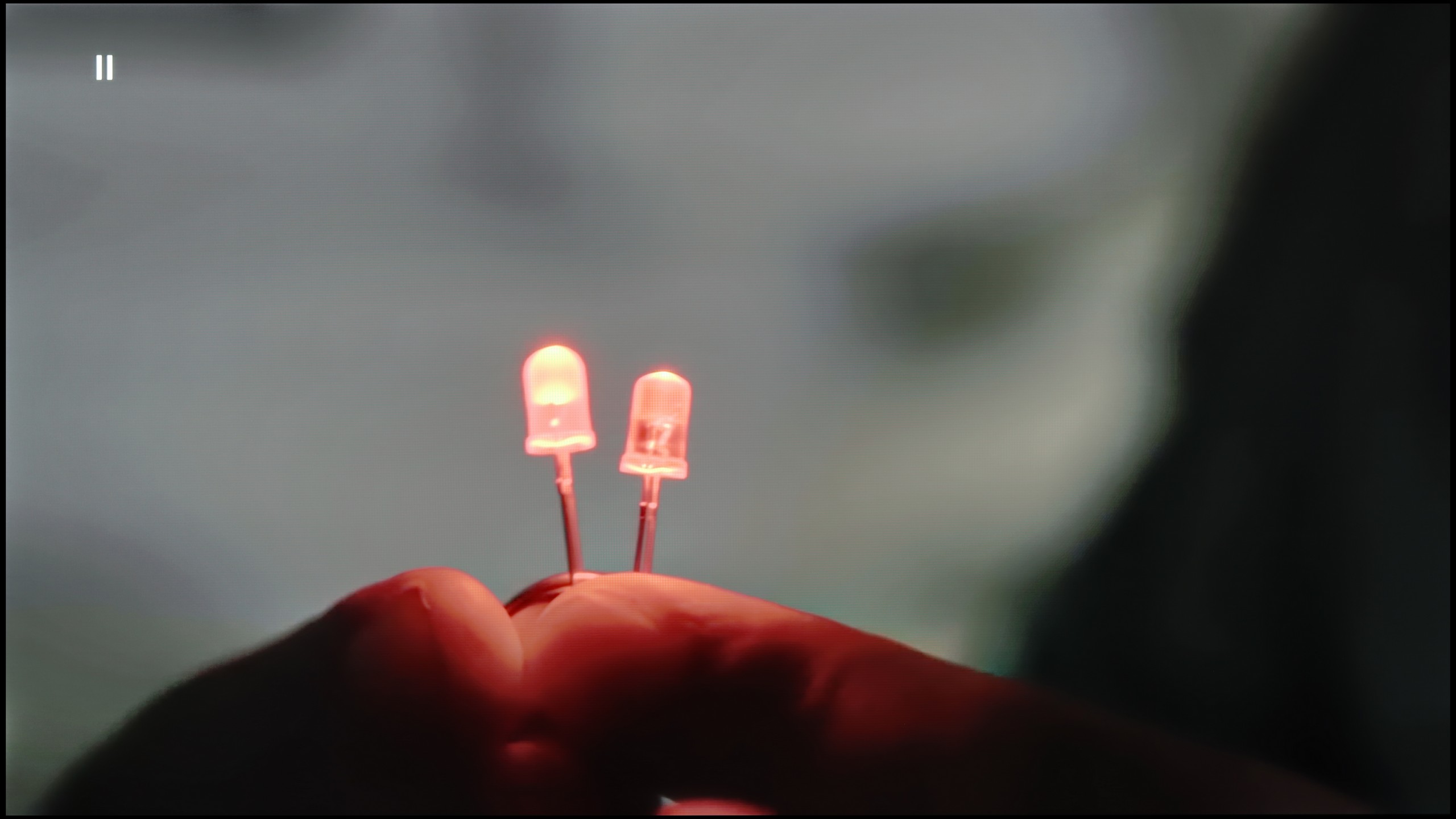

Image without overscan on the SD signal
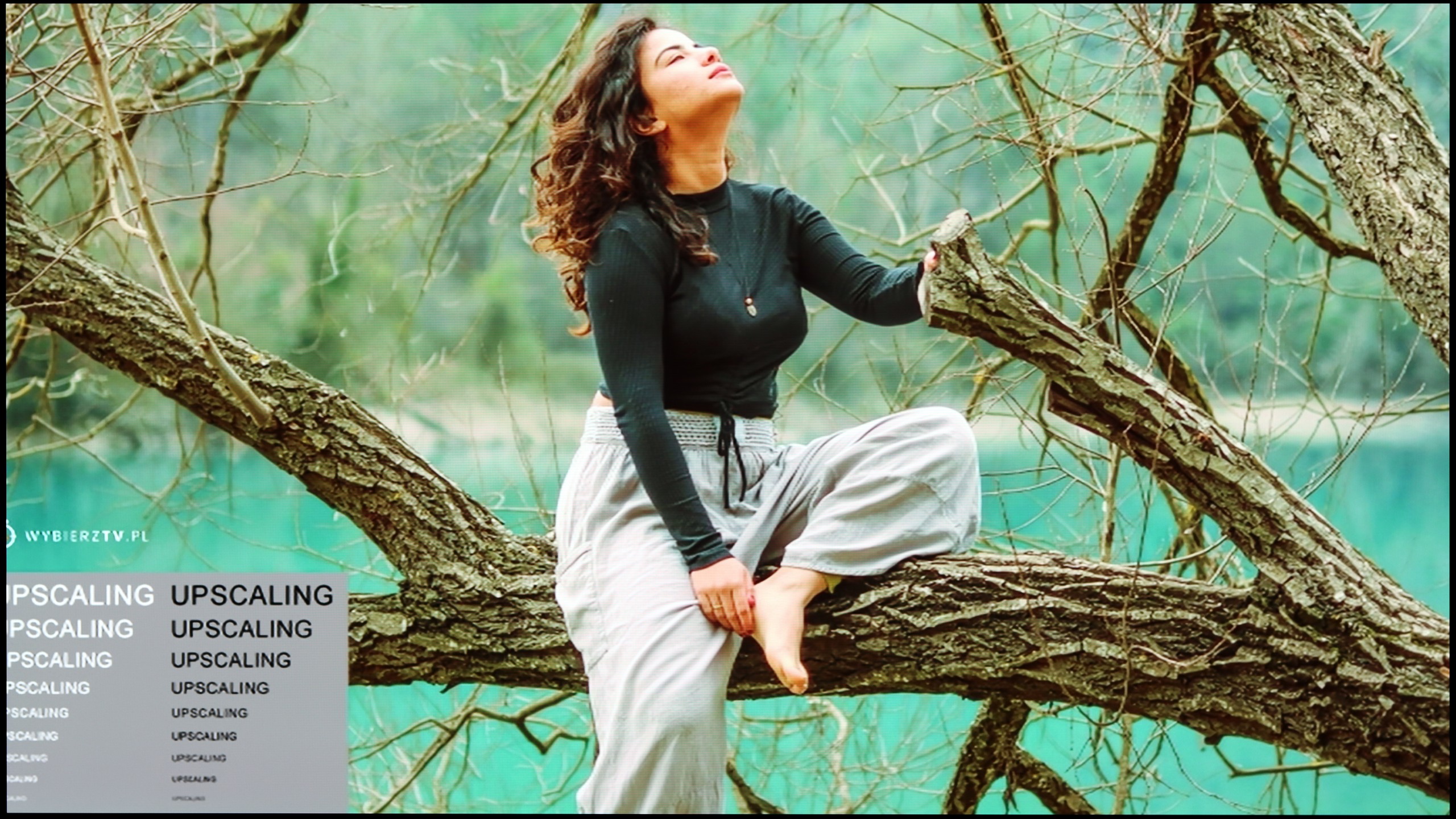

The Samsung S95F model features a noise reduction function aimed at improving the fluidity of tonal transitions. Its performance is hard to call ineffective – on the contrary, it can excessively interfere with the image. Older films or materials of lower quality, such as those from YouTube, take on a soft, smoothed character because of it, reminiscent of a painted effect. The problem is that along with the noise, the natural film grain, which gives the image a cinematic quality, also disappears. Fortunately, the function does not blur essential details, so its use is more a matter of taste. If someone prefers a slightly polished and smooth image, it’s worth turning it on, but in our opinion, the most sensible setting is “Standard”.
Upscaling leaves a better impression. The S95F efficiently enhances the quality of lower resolution content – even 576p video looks quite good, although some minor artifacts in the form of blockiness can be noticed. Overall, the effect is very solid, although when compared to the competition – such as the Sony Bravia 8 (II) or LG G5 – it can be seen that those models can extract a bit more from the image. However, it's worth remembering one inconvenience: with older films and photos, there is an overscan issue that causes a slight cropping of the left edge of the image.
If someone is worried about possible "steps" when connecting colors, there is a simple way in the QNED86A. Just turn on the feature called Smooth Gradation and set it to medium level. Then the TV really smooths out all those unwanted transitions – especially in older productions – and does it in such a way that the film grain doesn't disappear, nor do strange artifacts appear. In other words, you can use it without worry.
The upscaling itself also turns out quite well. Of course, there are no miracles here – with lower quality sources, you can observe characteristic jaggedness. Fortunately, there is a sharpness slider in the menu, and if someone prefers a more "softer" image, it can be quickly adjusted to their taste.
Blur and motion smoothness
9/10
7.9/10
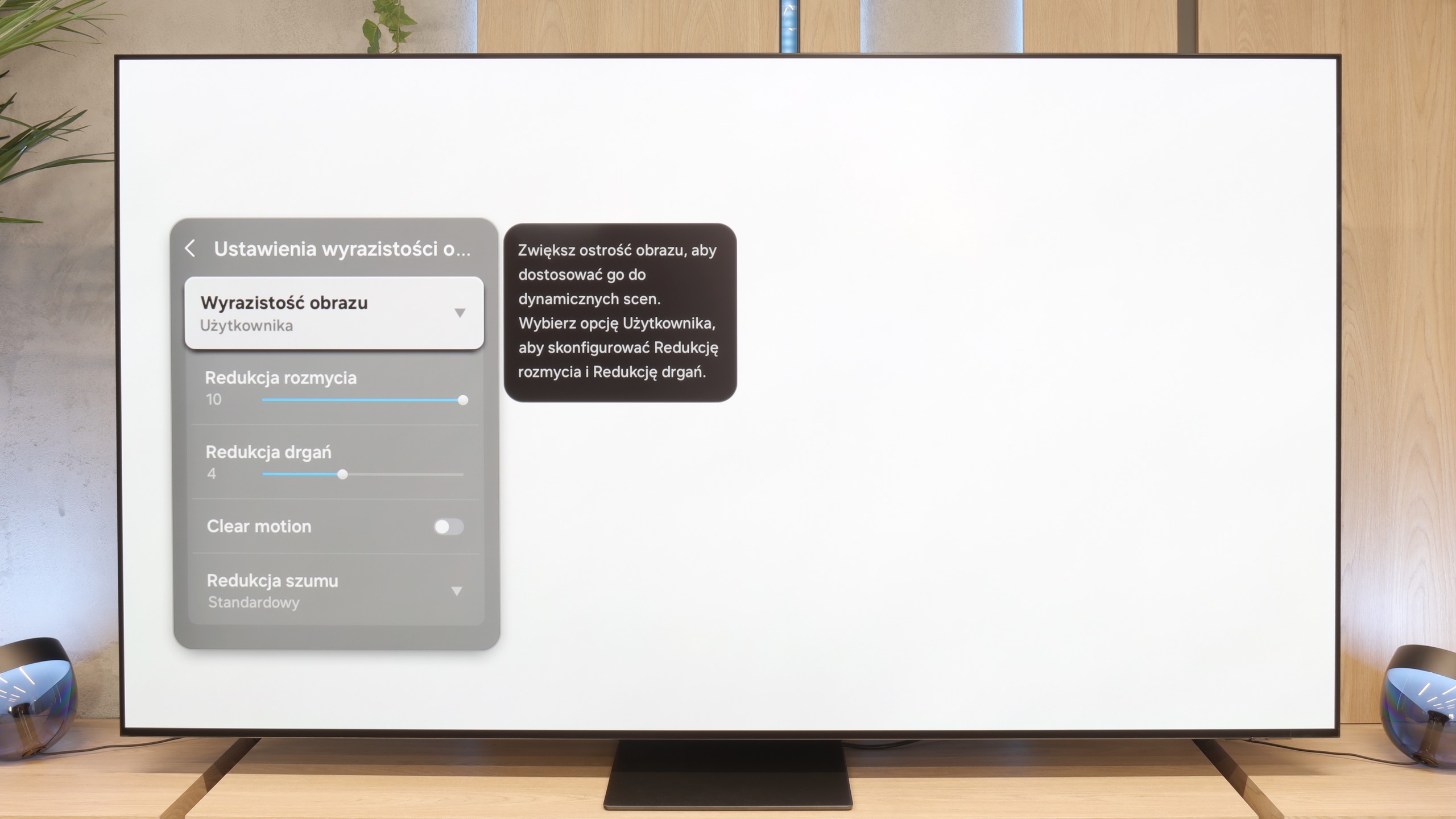

Blur (native resolution, maximum refresh rate):

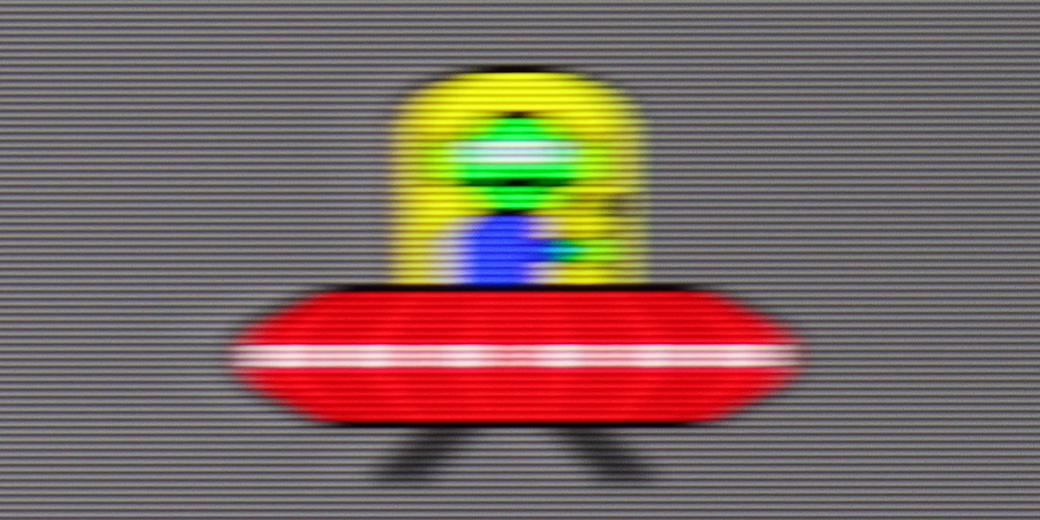




Blur (BFI function enabled):
Image flickers in this mode






Smużenie (4K@165Hz):
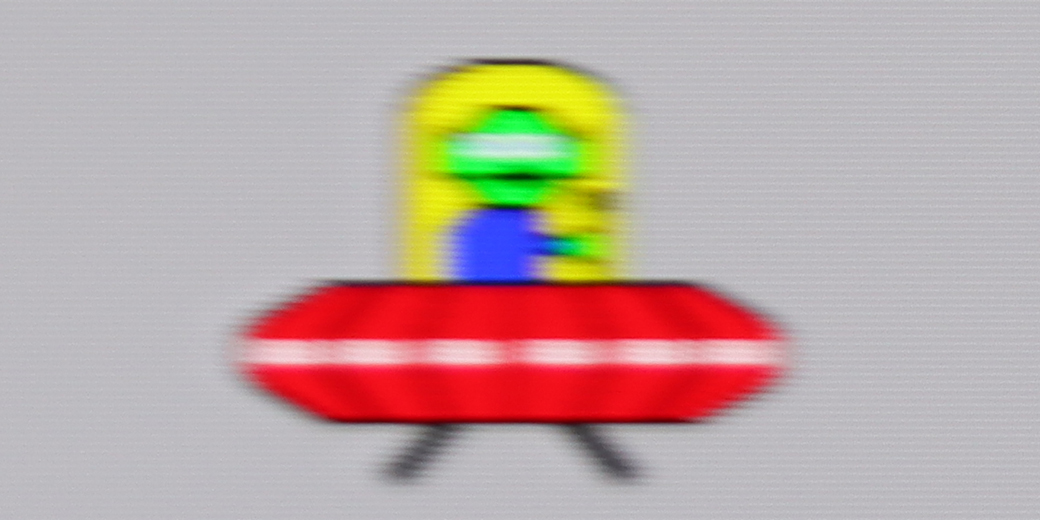
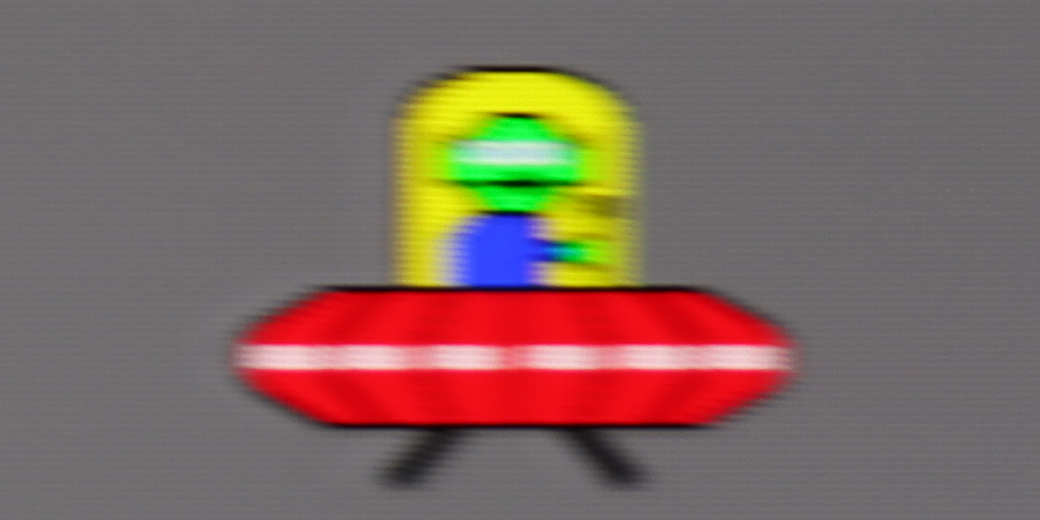
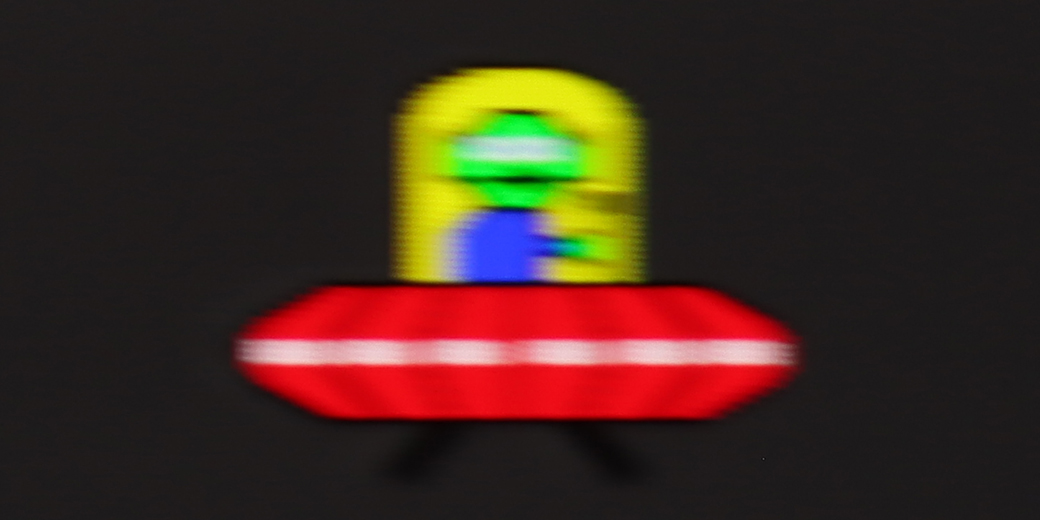
Smużenie ():
In the case of the 83-inch S95F with a Tandem OLED panel, the motion smoothness also makes a huge impression. The panel in native 4K resolution offers a refresh rate of 165 Hz, and this combined with organic technology makes games and sports look remarkable. Additionally, the manufacturer added a film smoother and a motion blur reduction system, allowing each viewer to adjust the image to their own preferences – whether it's a more "frame-rate" cinematic effect or a smooth, almost theatrical spectacle.
The QNED86A is equipped with a 120 Hz refresh rate panel, so right from the start, it's safe to say that it's suitable for both sports and gaming. And indeed, this is true – the image looks smooth, and motion blur is not very noticeable. IPS panels have always had some issues with this, and you can sometimes notice slight blurring here as well, especially in very dynamic scenes, but it's not something that ruins watching a match or a fast-paced game. For movie and sports fans, LG has added the traditional TruMotion smoother. In the menu, we have two sliders – one for movies (De-Judder), the other for sports (De-Blur). The first adds missing frames and allows you to adjust the character of motion – from raw, cinematic to more fluid, "theatrical." The second enhances sharpness during dynamic actions, so it's worth turning it up a bit if you're watching a lot of sports.
Console compatibility and gaming features
9.6/10
9.8/10
- ALLM
- VRR
- VRR range48 - 165Hz48 - 120Hz
- Dolby Vision Game Mode
- Correct implementation of HGIG
- 1080p@120Hz
- 1440p@120Hz
- 4K@120Hz
- Game bar
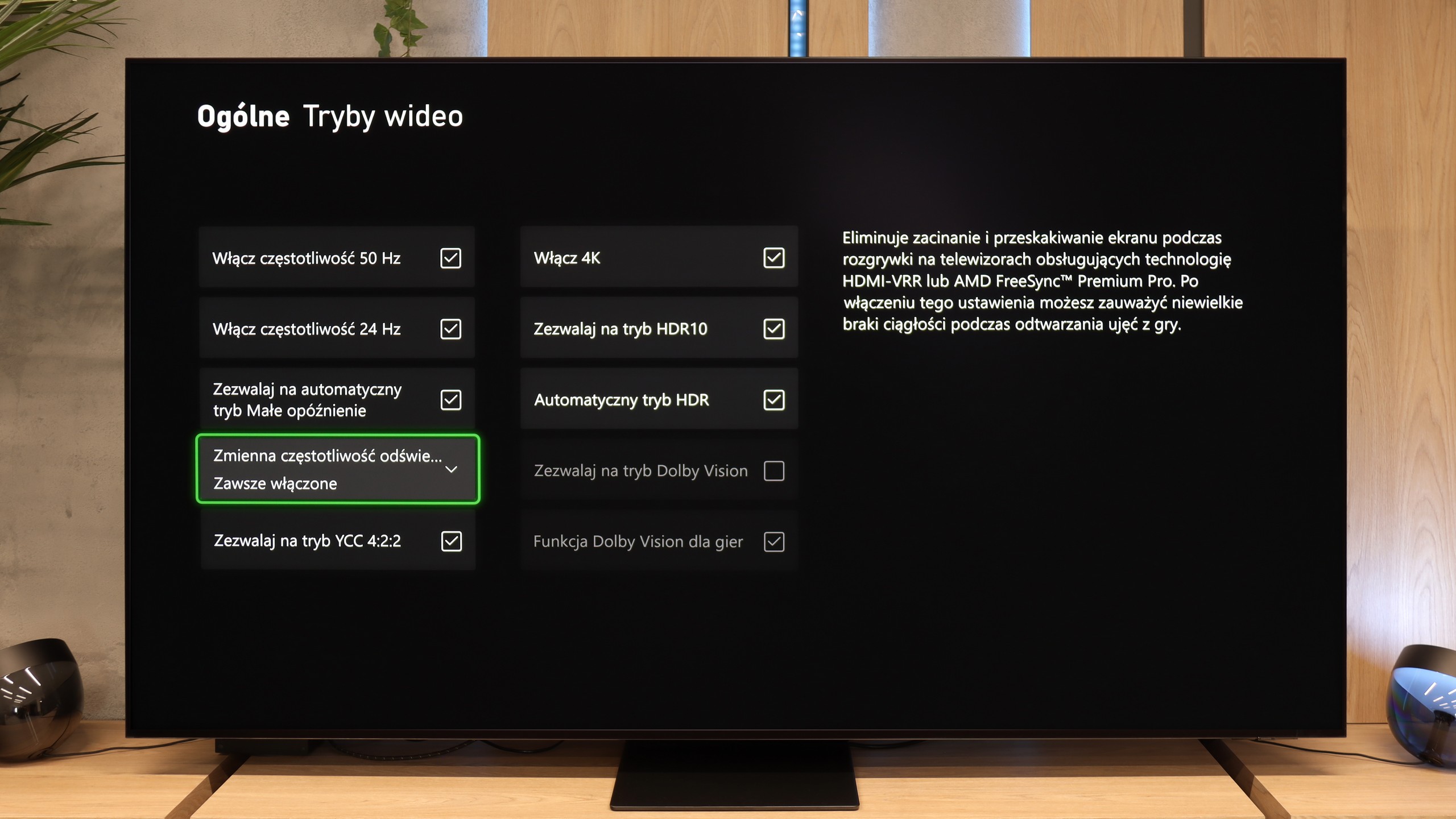

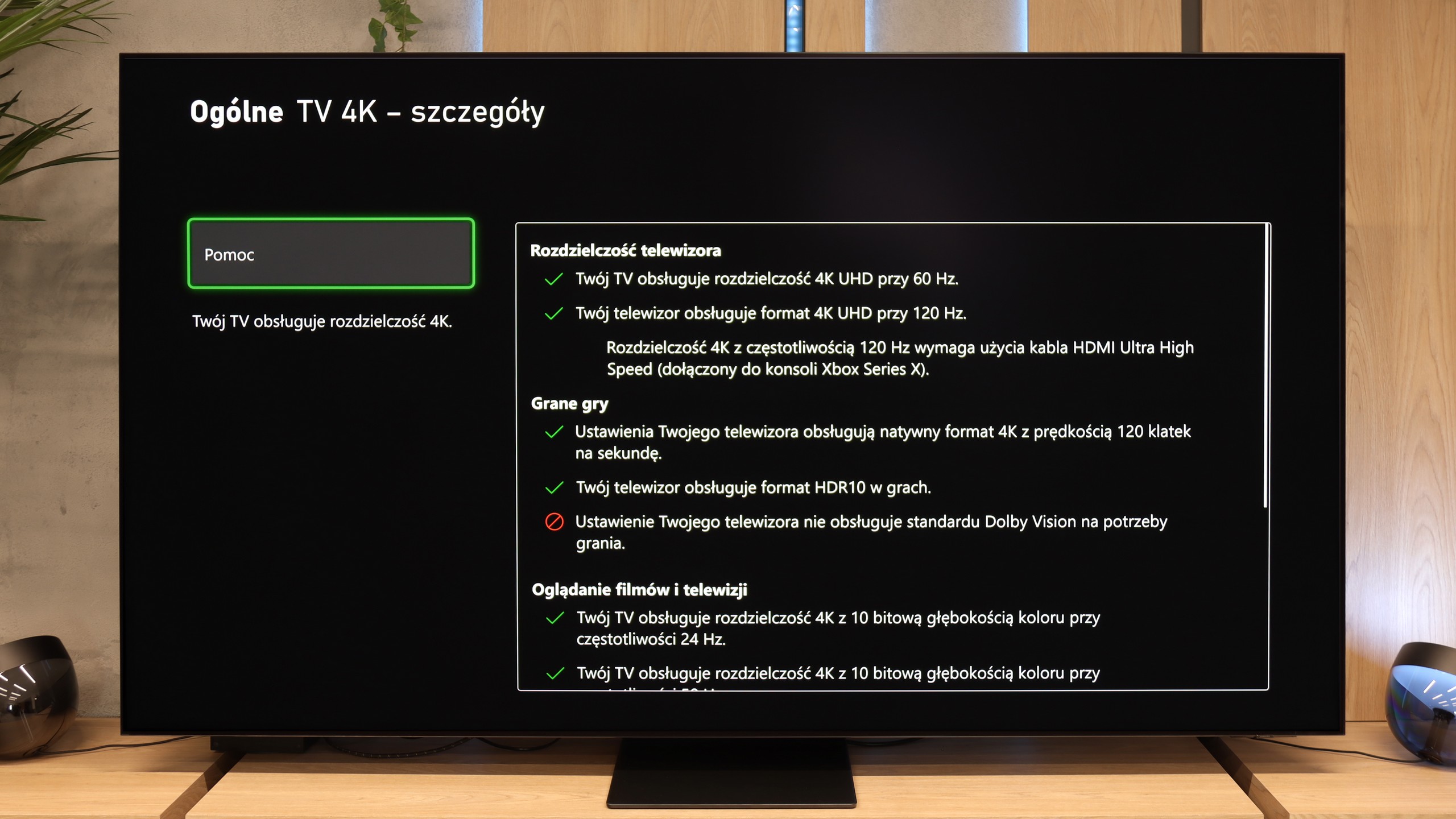

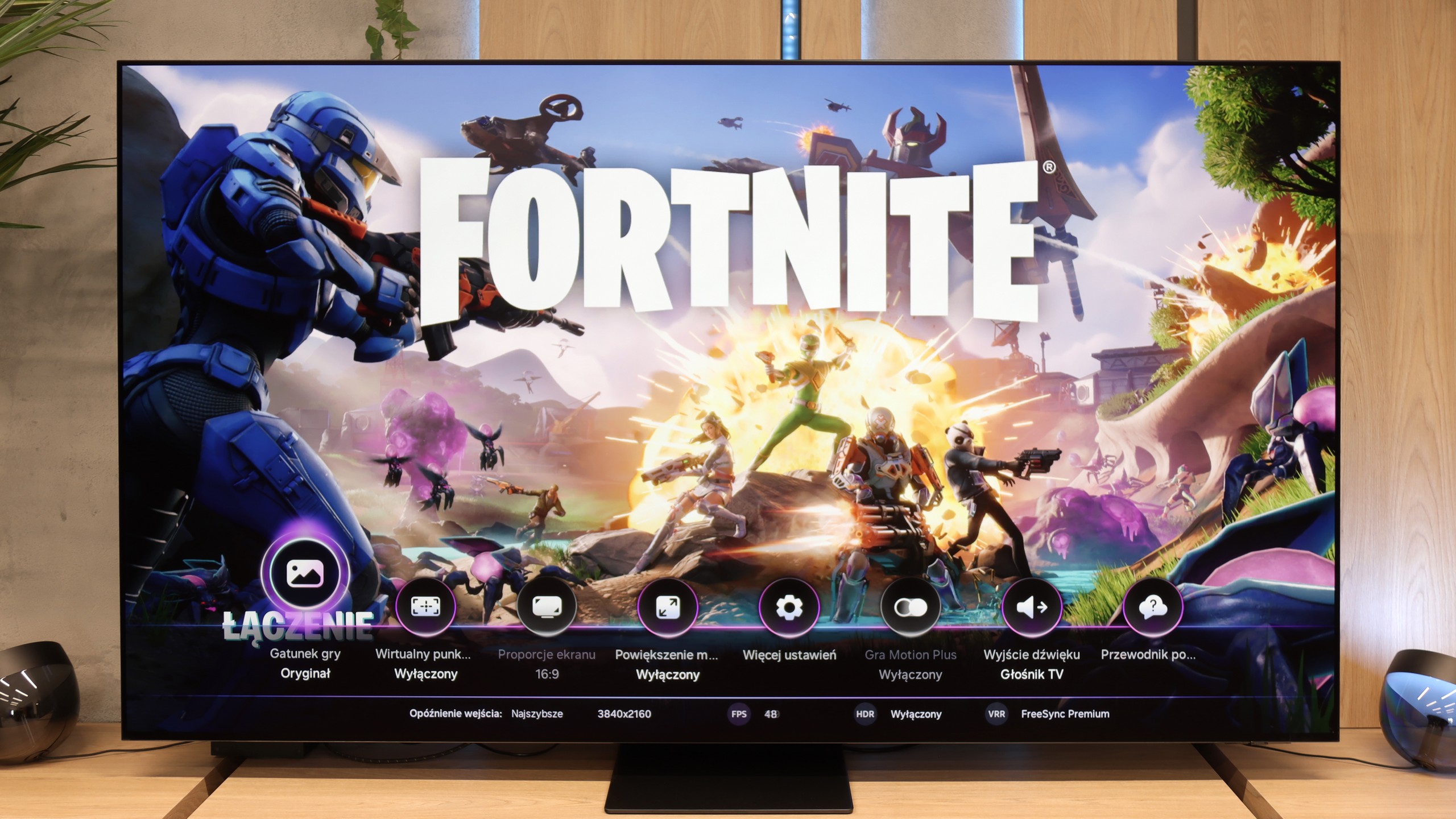

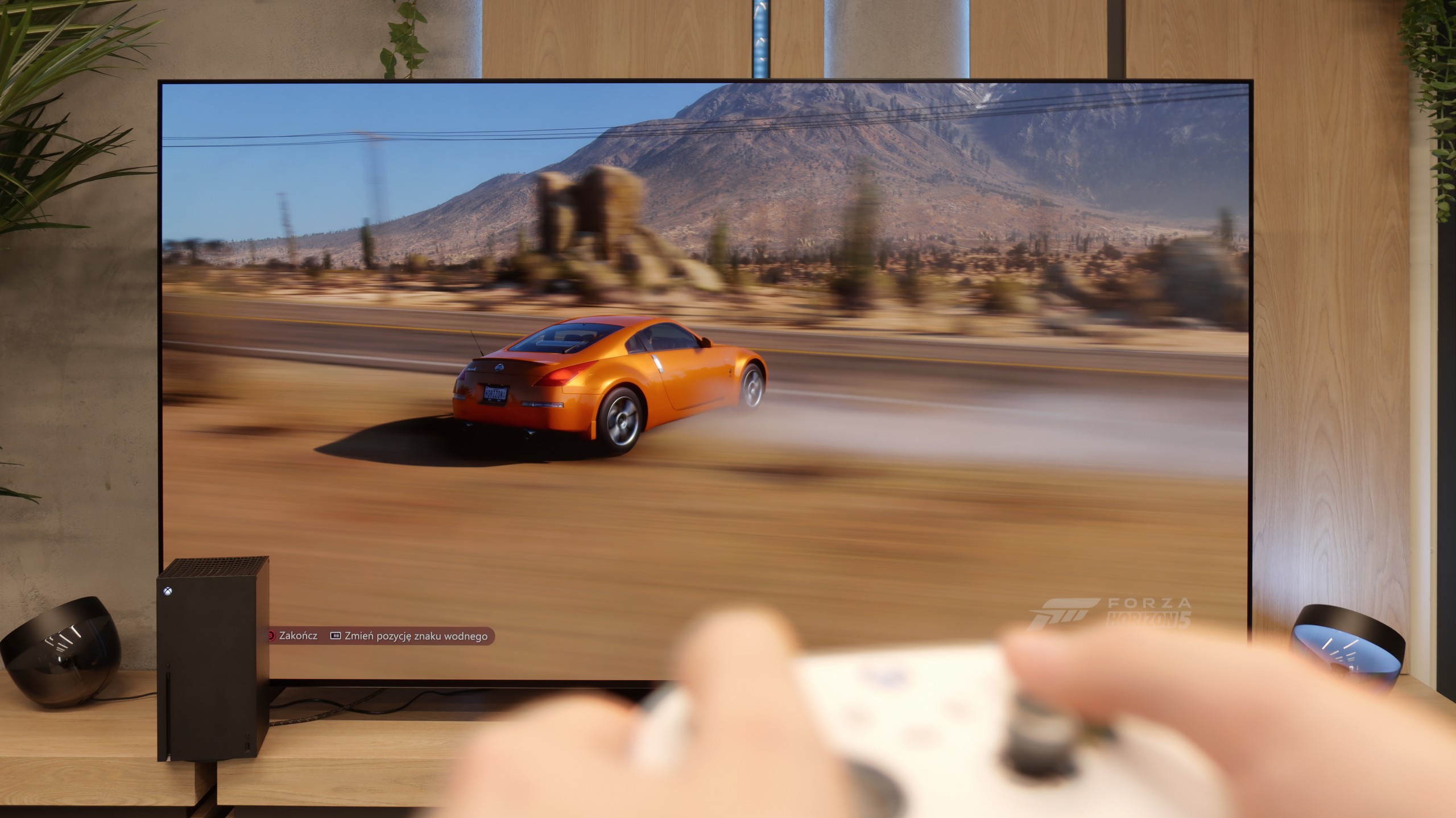

The low trailing and phenomenal motion fluidity, which are the hallmarks of OLED technology, are just the warm-up. The Samsung S95F has been designed with gamers in mind – and this is evident at every turn. Four HDMI 2.1 ports with a bandwidth of 40 Gb/s may sound like a compromise on paper, but in practice, neither consoles nor PCs will experience the slightest limitations. On board is a complete set of gaming features: variable refresh rate (VRR), automatic low latency mode (ALLM), and a flawlessly implemented HGiG standard, which allows you to enjoy HDR exactly as the creators intended. All of this is complemented by Game Bar – an intuitive control center where you can check and adjust the most important settings in seconds.
Particular attention should also be paid to Game Motion Plus, Samsung's own smoothing technology. It can add extra fluidity to animations, which can be a lifesaver in games running at 60 frames, where stability doesn't always hold up. Indeed, support for Dolby Vision in games is missing, but it's hard to consider this a serious flaw – the manufacturer compensates for this gap with other solutions. The S95F is one of the absolute favorites for the title of the best gaming TV on today's market.
In terms of gaming, the LG QNED86A6A is a complete tool. It features four HDMI 2.1 ports with full bandwidth of 48 Gb/s, which means that whether you connect a PlayStation 5, Xbox Series X, or a powerful PC – everything will work at full 4K 120 Hz with support for all features. This is a big plus, as some competitors still have only two such ports, which can be problematic with a larger number of devices. It also has VRR, or variable refresh rate, which eliminates screen tearing, and ALLM, which automatically activates game mode when the console is turned on. There’s also Dolby Vision Gaming and a proper implementation of the HGiG format, so titles supporting these formats look more vivid and detailed. Added to all of this is the Game Optimizer – a kind of control center for the gamer. From this level, you can view image parameters in real-time, quickly change modes, activate additional features, or adjust image settings to your preferences. The LG QNED86A6A essentially has everything one can expect from a modern gaming television.
Input lag
10/10
9.9/10
SDR
HDR
Dolby Vision
The input lag on the Samsung S95F is absolutely top-notch—just 5 ms with 120 Hz content is truly impressive. The response to our actions on the controller is almost instantaneous, giving a sense of complete control over the gameplay. Of course, with 60 Hz content, the lag is doubled, but even 10 ms is hard to complain about—it’s still a result that will satisfy both demanding gamers and e-sports perfectionists.
There's really nothing to complain about here. The QNED86A6A achieves excellent results – around 5 ms for 120 Hz content and about 15 ms for 60 Hz. These are values that will easily satisfy both console gamers and those who connect a PC to the TV. The response to movements is instantaneous, so you can forget about delays between the image and the action on the controller.
Compatibility with PC
8.8/10
8/10
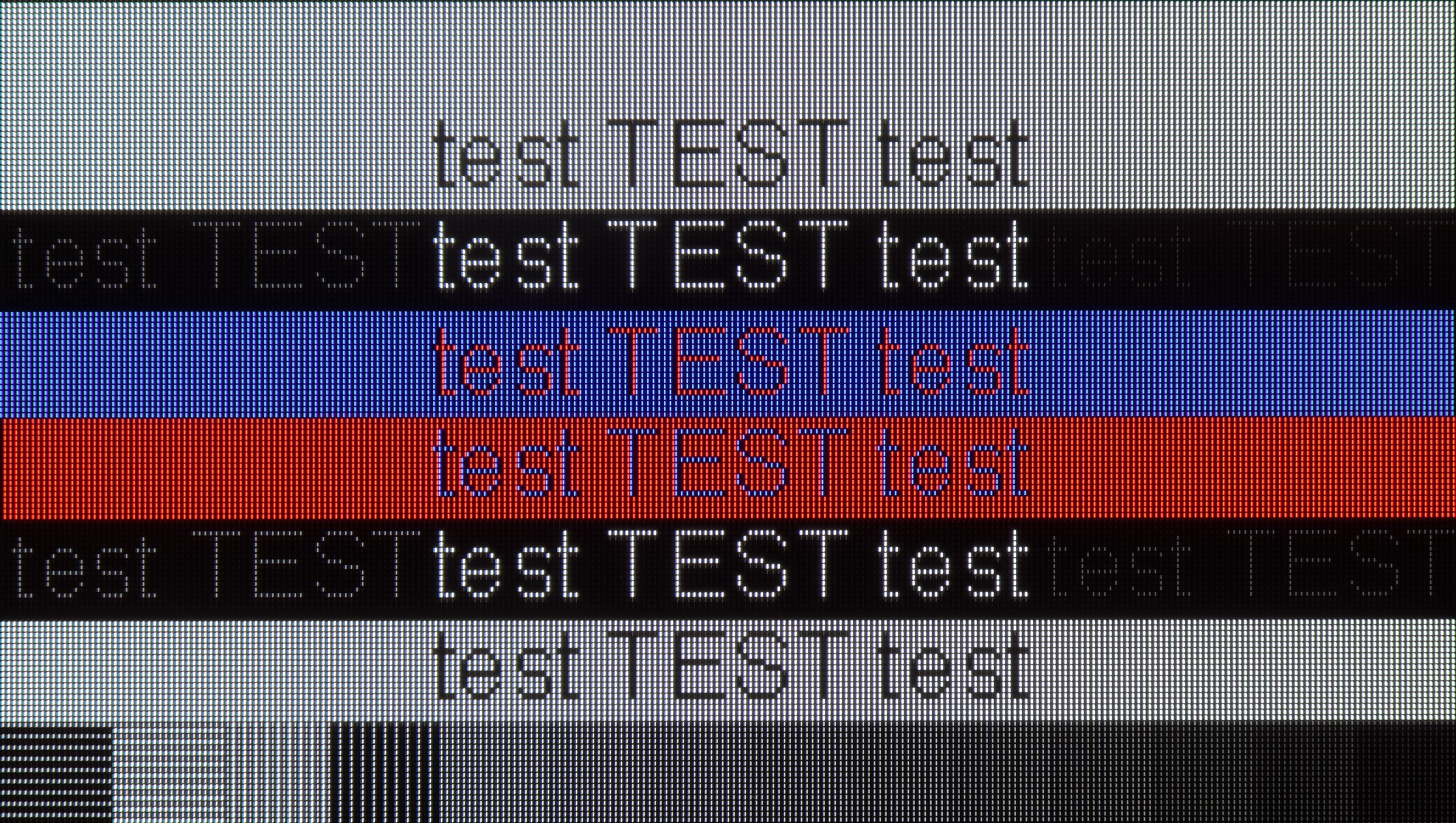

In the version with the WOLED panel, the Samsung S95F also shows its claws – PC gamers have access to a full gaming package with low input lag, support for G-Sync and FreeSync, and fast refresh rates. This is equipment that can easily replace a monitor even in dynamic titles. When working with text, the differences compared to QD-OLED are subtle but noticeable – the BWGR subpixel arrangement may give the impression of slightly softened letter edges, as if the text had a delicate shadow. This is not a flaw that spoils the comfort of using a PC, but rather a feature resulting from the panel's design.
The LG QNED86A, thanks to its IPS matrix, full RGB subpixel layout, and correct implementation of chroma 4:4:4, makes fonts look stunning. Text is sharp, clear, and legible, making this TV great for office work. This is important because this year the model is also debuting in a 43" size, and such a variant can comfortably land on a desk and serve as a large monitor. Of course, some users who opt for the 43" will be gamers, and there are also no complaints here. The TV supports 4K at 120 Hz, so gameplay is smooth and enjoyable. It’s a bit of a shame that there's no higher refresh rate mode like the 144Hz declared by the manufacturer, as PC gamers would surely appreciate that. Nevertheless, the QNED86A6A performs really well as a monitor for gaming and work.
Viewing angles
7.6/10
6.9/10
In the version with the WOLED matrix, the viewing angles are good and absolutely sufficient for everyday watching. The fact is that the QD-OLED panel performs better in this regard, and with strong deviation, a slight color change can be seen; however, this is not something that bothers during a normal viewing session. Sitting on the couch – whether in the middle or slightly to the side – the picture still looks very good, and most viewers will be fully satisfied.
QNED86A6A performs very well in this regard. The IPS panel used here ensures that the image retains its brightness and color saturation even when viewed at an angle. There is no fading effect that often appears in cheaper TVs with VA panels. Of course, there is no comparison to the level offered by organic panels, where colors and contrast hold up perfectly at almost any angle. But for an LCD TV, it is definitely one of the better results and is easily sufficient for watching movies or sports together on the couch with a larger group.
TV efficiency during daytime
7.7/10
5.8/10
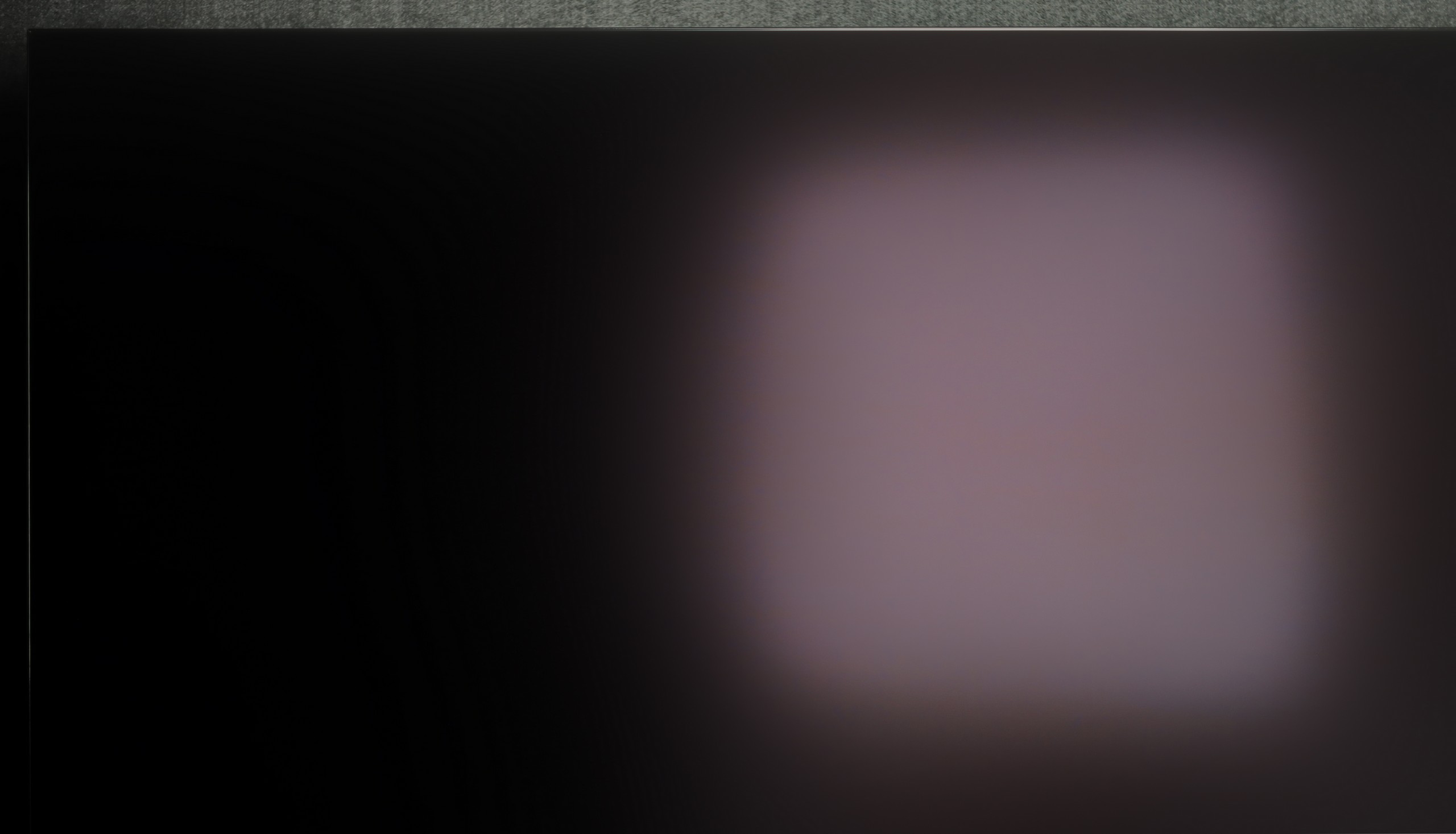

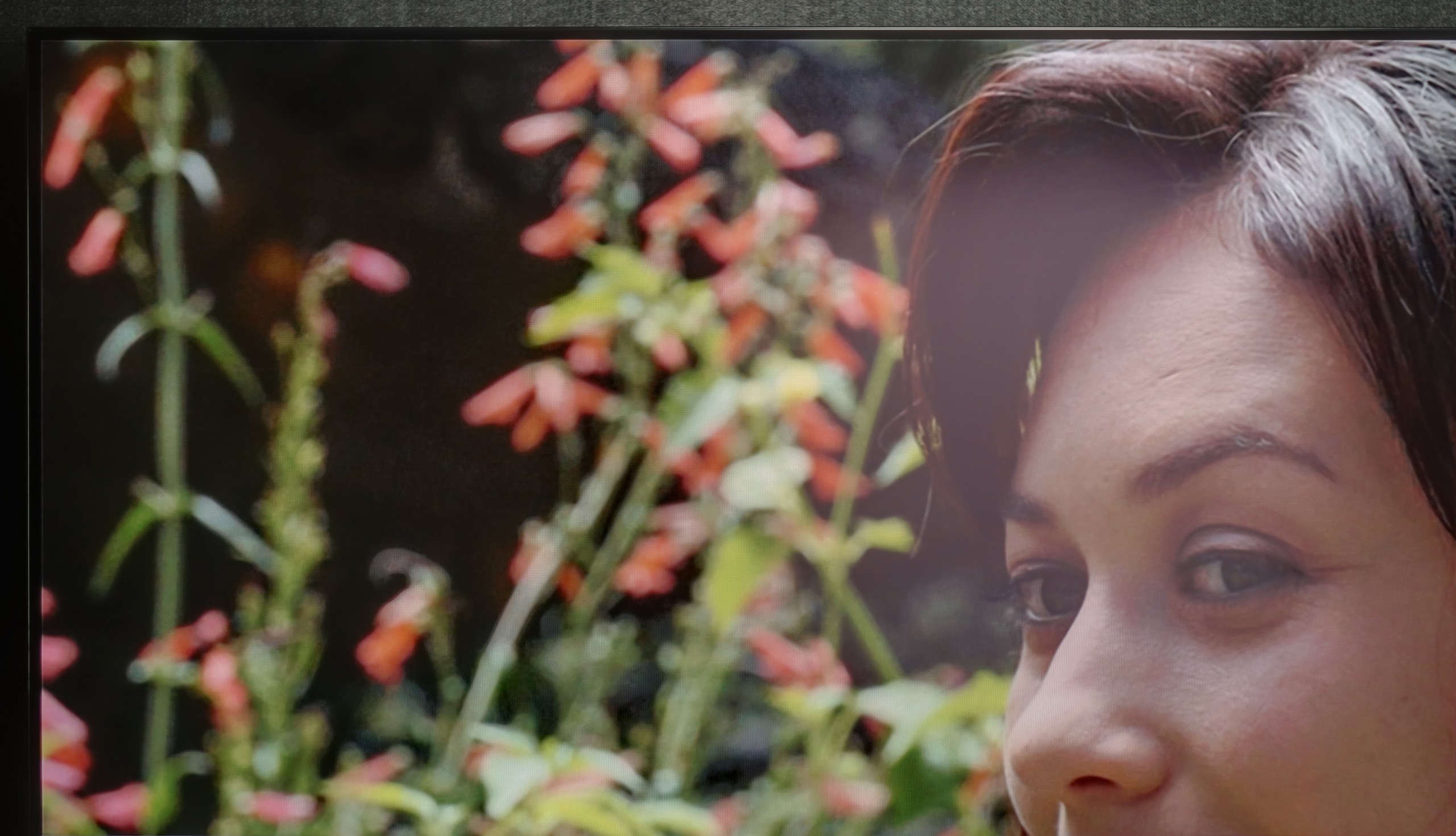

Matrix brightness
Average luminance SDR
LG QNED86A / QNED85A / QNED87A: 462 cd/m2
SAMSUNG S95F (TANDEM OLED 83"): 704 cd/m2
This is probably the first television in the world where two worlds meet – a matte finish from Samsung and a WOLED panel from LG Display. And it must be admitted that such a duet makes a stunning impression. Reflections of light practically disappear, and the image does not lose its naturalness – colors remain saturated, and blacks do not lighten up as in QD-OLED. It sounds almost like an industry joke, but it turns out that the combination of technologies from two rivals has yielded a result better than anyone could have expected. Moreover, the panel's brightness, oscillating around 700 nits, allows the television to perform excellently even in challenging daytime conditions.
QNED86A6A is not a brightness master, but it manages just fine. Thanks to the moderately high brightness of the panel and quite decent glare reduction, the television performs well in typical, moderately lit living rooms. The image remains clear, and colors do not lose their intensity in daylight. However, let’s not kid ourselves; this is not a screen that will handle extremely bright conditions, where sunlight pours in through huge windows and floods the room.
Details about the matrix
Subpixel Structure:
Panel uniformity and thermal imaging:
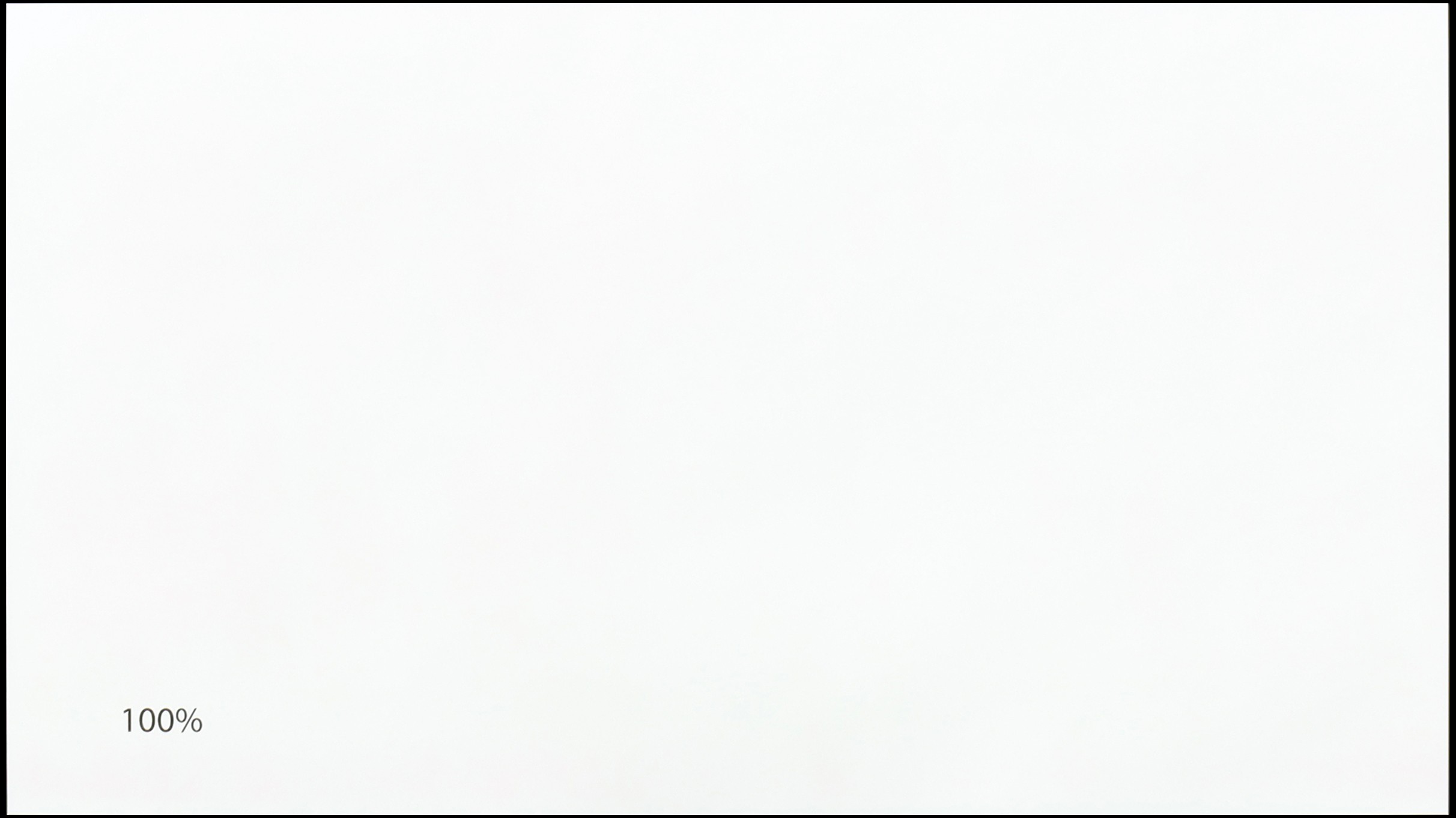

SAMSUNG S95F (TANDEM OLED 83")
LG QNED86A / QNED85A / QNED87A
TV features
7.9/10
8.4/10
- HDMI inputs0 x HDMI 2.0, 4 x HDMI 2.1 40Gbps0 x HDMI 2.0, 4 x HDMI 2.1 48Gbps
- OutputsToslink (Optical audio), eARC (HDMI), ARC (HDMI)Toslink (Optical audio), eARC (HDMI), ARC (HDMI)
- Network InterfacesWi-Fi 2.4GHz, Wi-Fi 5GHz, Ethernet (LAN) 100MbpsWi-Fi 2.4GHz, Wi-Fi 5GHz, Ethernet (LAN) 100Mbps
- TV receptionDVB-T, DVB-T2, DVB-S, DVB-S2, DVB-CDVB-T, DVB-T2, DVB-S, DVB-S2, DVB-C
Classic features:
- Recording to USB (terrestrial TV)
- Recording programming
- Picture in Picture (PiP)
- RF remote control (no need to aim at the screen)
- Backlit remote control
- Teletext
- Audio only mode
- Bluetooth headphones support
- Simultaneous Bluetooth headphones & TV audio
Smart features:
- AirPlay
- Screen mirroring (Windows Miracast)
- Voice search
- Voice search in native language
- Ability to connect a keyboard and mouse
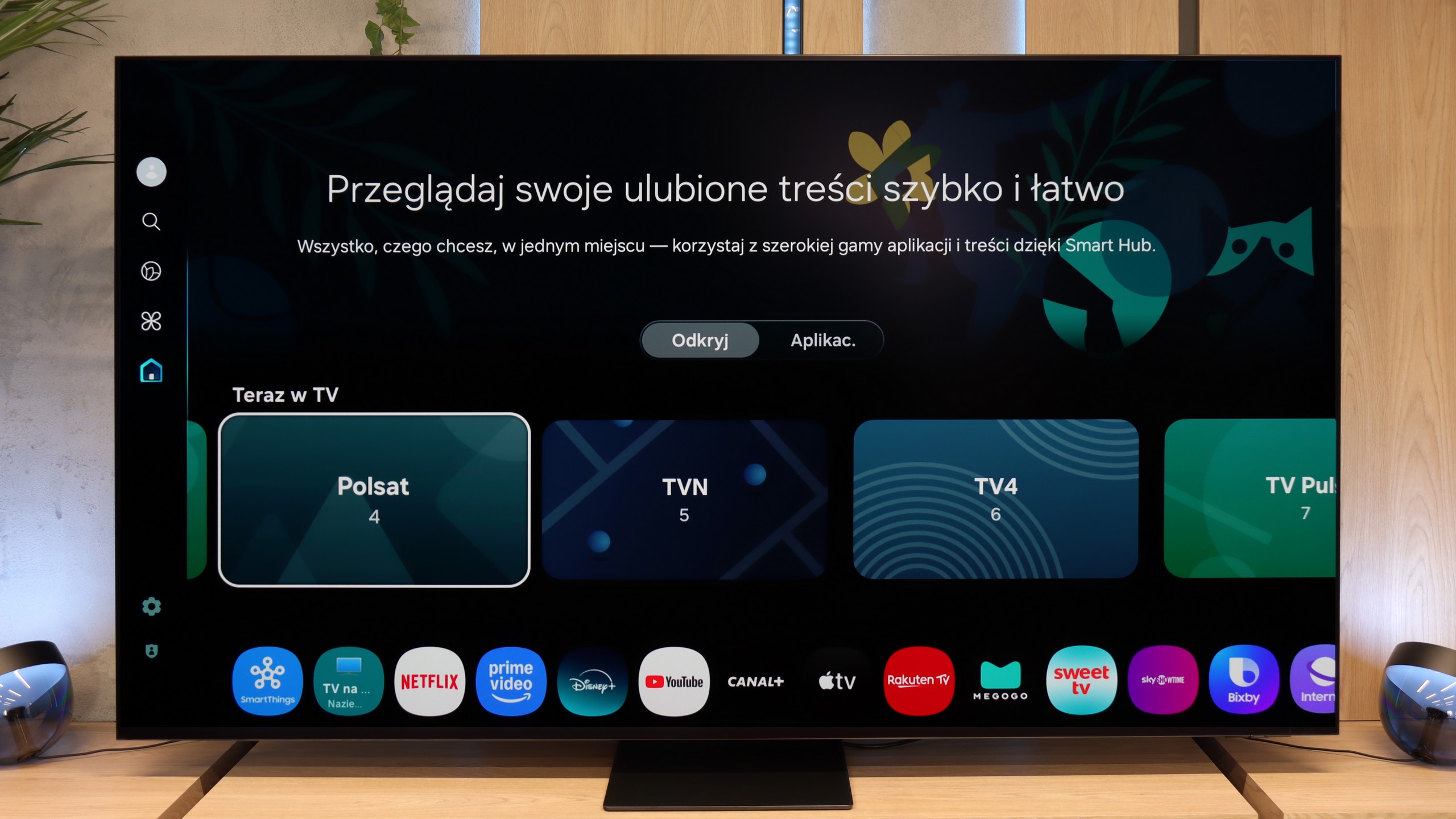
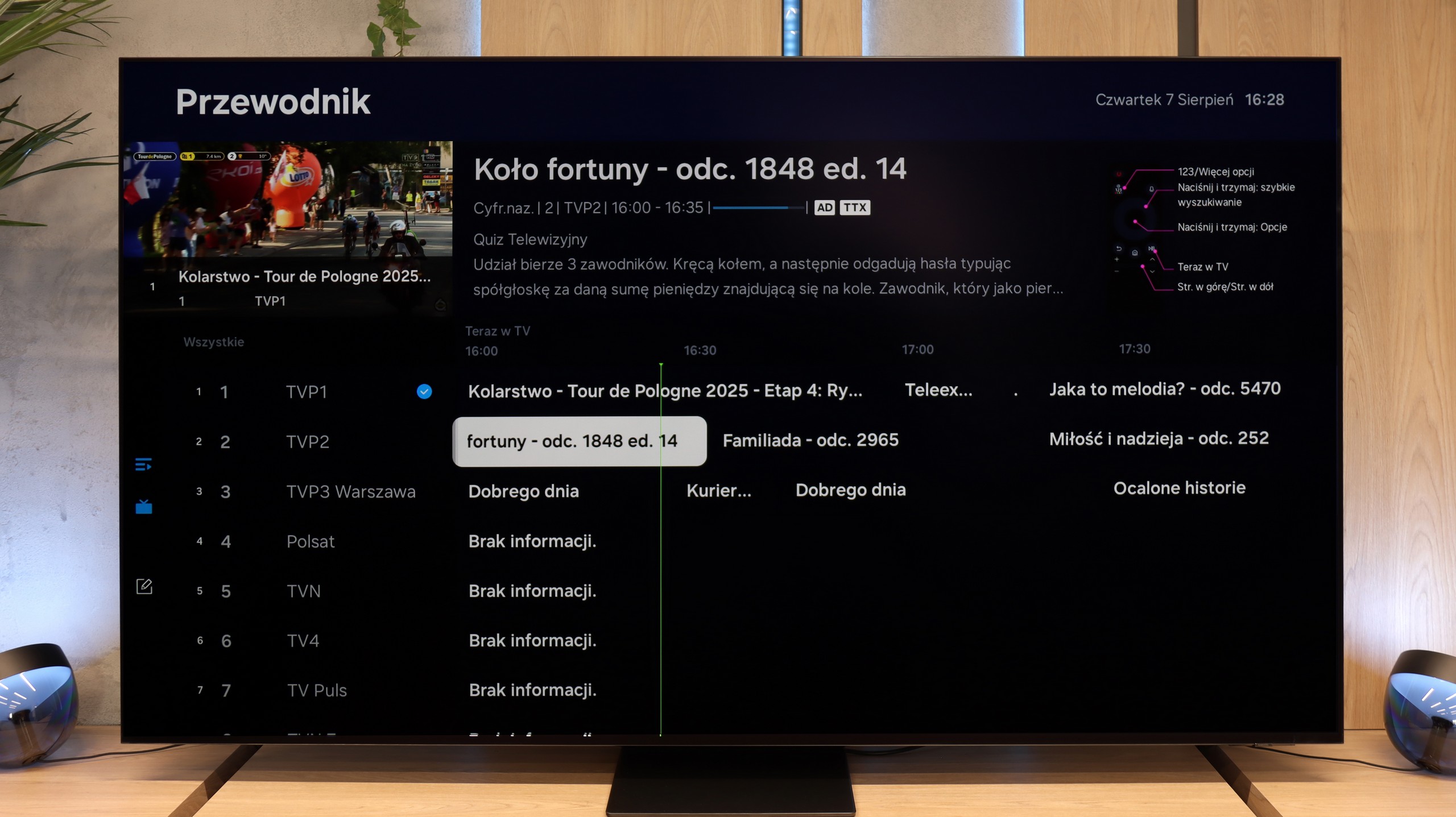
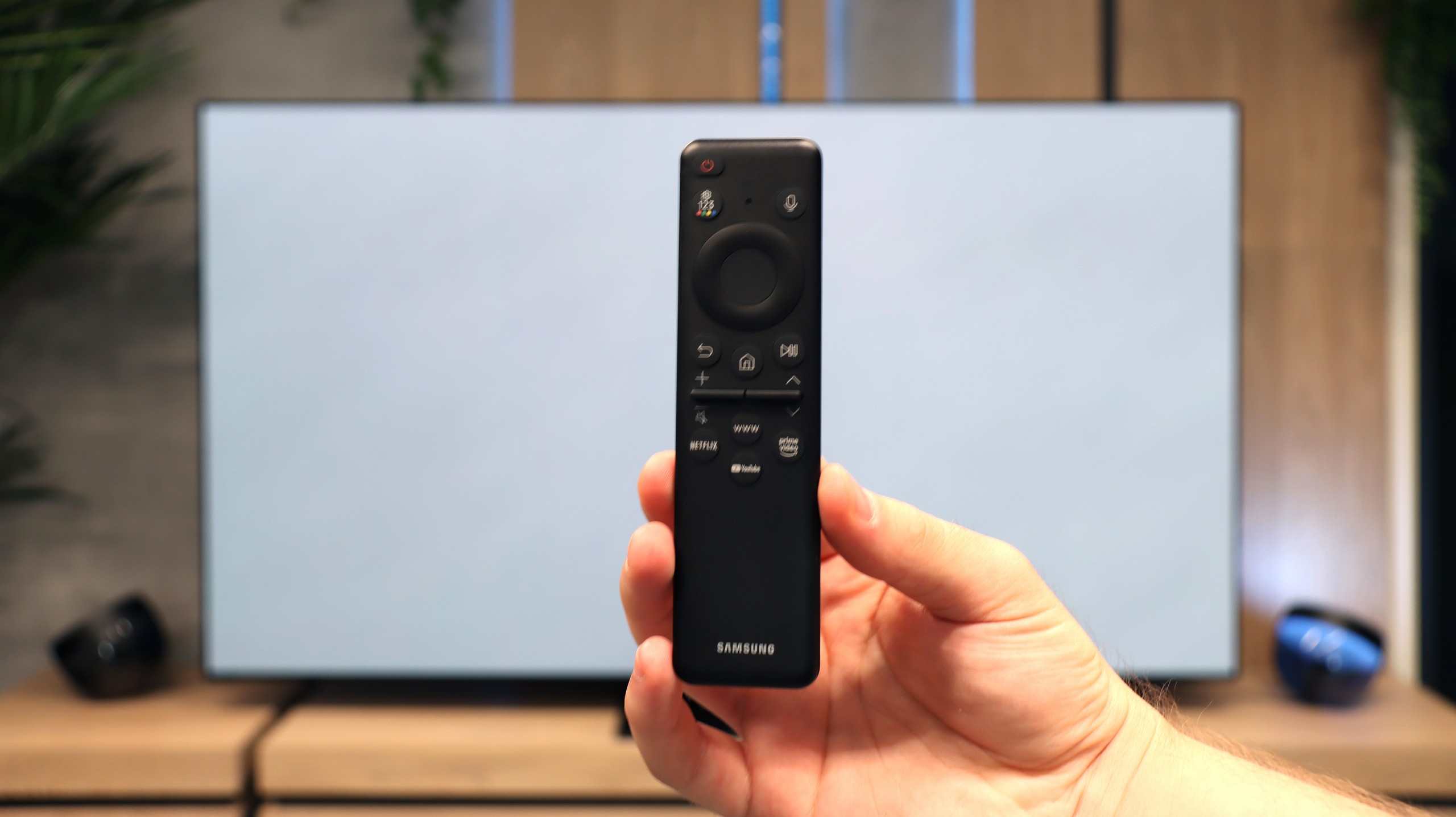
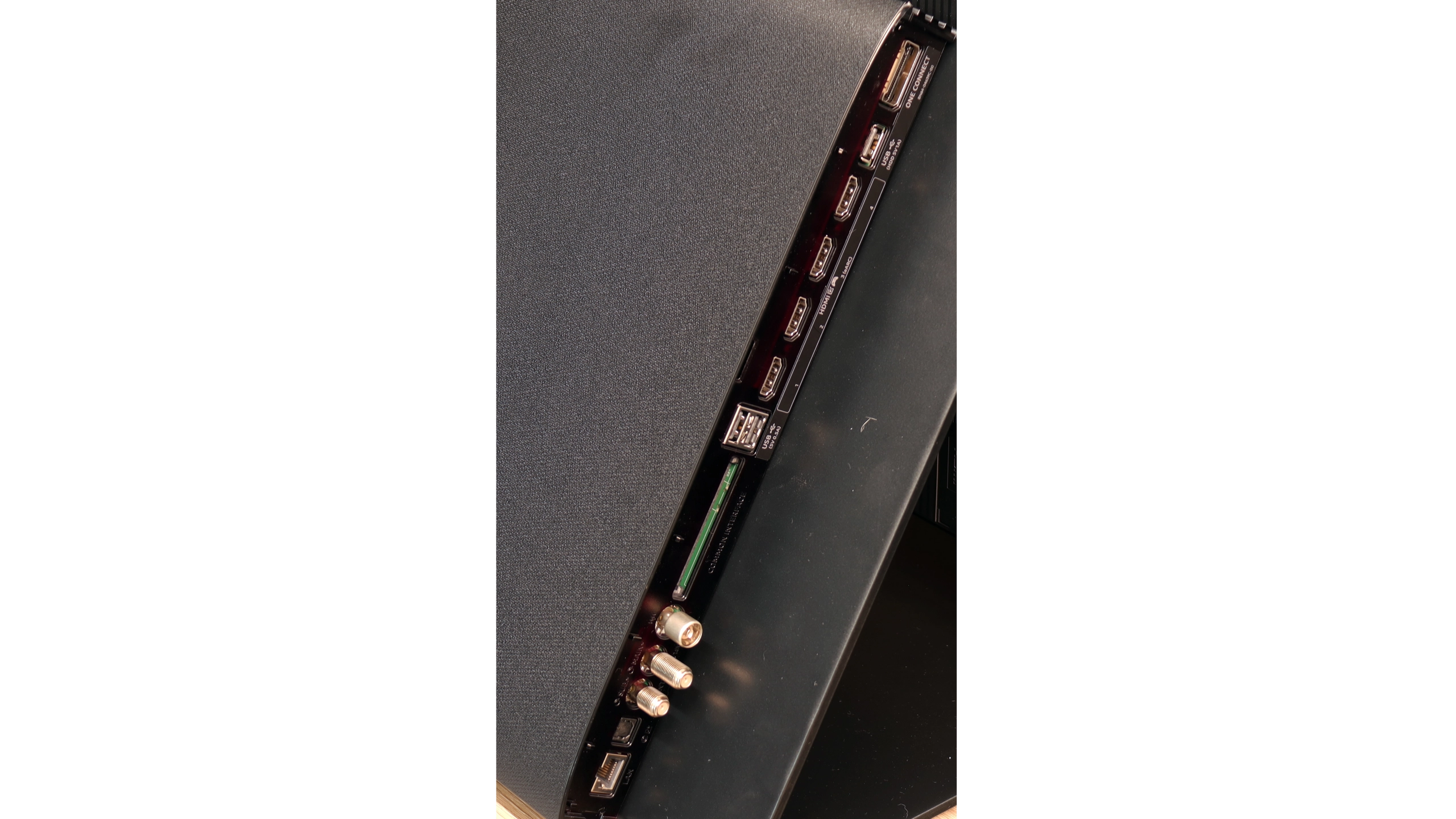




SmartTV in S95F: Tizen
The Samsung S95F is not just a screen for movies and games, but also a well-developed smart platform. The Tizen system operates quickly and efficiently – it's hard to encounter stutters or serious issues here. On a daily basis, we have everything we need: AirPlay, screen sharing from smartphones, voice search (which works even without holding the remote). It's a closed system, so we won't find every app available on Android, but the library is rich enough that no one is likely to feel deprived. Additionally, there's SmartThings, which integrates with smart homes, allowing the TV to be more than just a display.
Classic Features of S95F
A pleasant surprise is the presence of features that are often skipped in this class of equipment – PiP, teletext, and the ability to connect headphones via Bluetooth. The only thing missing is USB recording from the built-in DVB-T/T2 tuners, but Samsung makes up for it with an excellent (tiny) remote that easily controls other devices, including the Canal+ decoder. The One Connect module also deserves praise – having all the connections hidden in a separate box is a huge convenience, especially for those who frequently juggle connected devices. It's therefore difficult to pinpoint an element that could lead to complaints here.
Smart Features: webOS
QNED86A6A runs on the well-known webOS – a system that has been a strong point of LG TVs for years. Everything operates quickly and stably, and apps launch without significant delays, though the interface can be somewhat overwhelmed by advertisements at times. Fortunately, the convenience is more noticeable in daily use than the shortcomings. A significant advantage is the Magic Remote, which allows you to control the cursor like a mouse – it's one of those features that you can easily get used to and later find hard to give up. The new version of the remote is slimmer as it has been stripped of the numeric keypad. Some will appreciate the simplicity, while others will miss the classic set of buttons; it's more a matter of habit.
Classic Features
Onboard, there are also a few solutions that are not always obvious in 2025. There is the ability to record programs from built-in DVB-T2 tuners onto USB, so you can calmly return to a match or series at any moment. In the evening, Bluetooth headphone support will come in handy – especially if someone in the house falls asleep faster than we do. Additionally, there is a full set of HDMI 2.1 ports with eARC support and audio formats like Dolby Digital and Dolby Atmos.
Playing files from USB
9/10
8.9/10
Supported photo formats:
Maximum photo resolution:
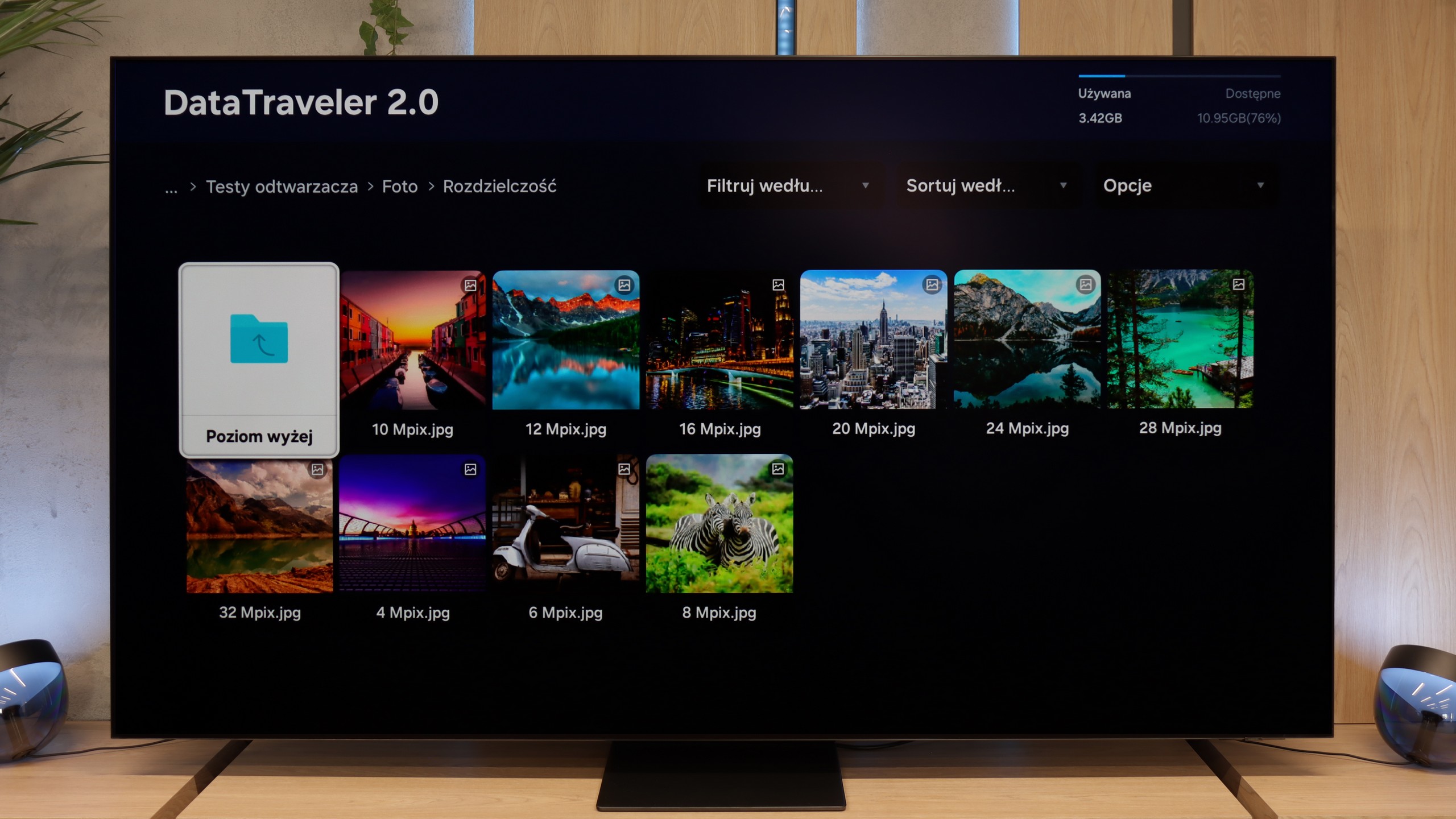

The built-in media player in the S95F works quite well, although it is not without limitations. It handles most popular video and audio formats, but there can be some reservations regarding photos. The manufacturer's claims do not always align with practice – for example, HEIC files refused to open. On the other hand, for most users, such a set of features will be more than adequate, and if someone needed something more advanced, they could always look for alternatives in the Tizen catalog (if they could find one) or wireless connectivity 😉.
The built-in media player in the QNED86A6A performs quite well with the most popular audio and video formats. During testing, we had no trouble playing MP4, MKV, or MP3 files; everything played smoothly without glitches. The TV also handled most images, although here we encountered a typical barrier for many manufacturers – the lack of full support for the HEIC format from Apple. So, if you regularly use an iPhone and store photos in this standard, you'll need to convert them beforehand or, preferably, transfer them using AirPlay. Other than that, it's hard to find fault as the built-in solution is really decent.
Apps
8.7/10
9.1/10














































Sound
8/10
6/10
- Maximum volume82dB84dB
- Dolby Digital Plus 7.1
- Dolby True HD 7.1
- Dolby Atmos in Dolby Digital Plus (JOC)
- Dolby Atmos in Dolby True HD
- DTS:X in DTS-HD MA
- DTS-HD Master Audio
The built-in speakers of the S95F can be pleasantly surprising – they sound nice and clear, and despite the slim design of the television, it's hard to say that the sound is flat. Sure, there could be more bass, but that’s a natural compromise with such a thin casing. For everyday watching of movies or series, the setup works excellently. Those who enjoy stronger sensations should consider a soundbar – preferably one with Q-Symphony support. Then the television speakers and the Samsung soundbar work together.
In terms of sound, the QNED86A6A performs quite decently, but let's not hide it – this is not the level that will impress home cinema enthusiasts. The sound is clean and clear, dialogues are easily heard, but overall it sounds rather flat and there is definitely a lack of solid bass. For everyday watching of television, streaming services, or news, this is an acceptable level; however, if you plan to watch movies or play games more often, even a basic soundbar will make a significant difference.
Acoustic Measurements
82dBC (Max)
75dBC
84dBC (Max)
75dBC


